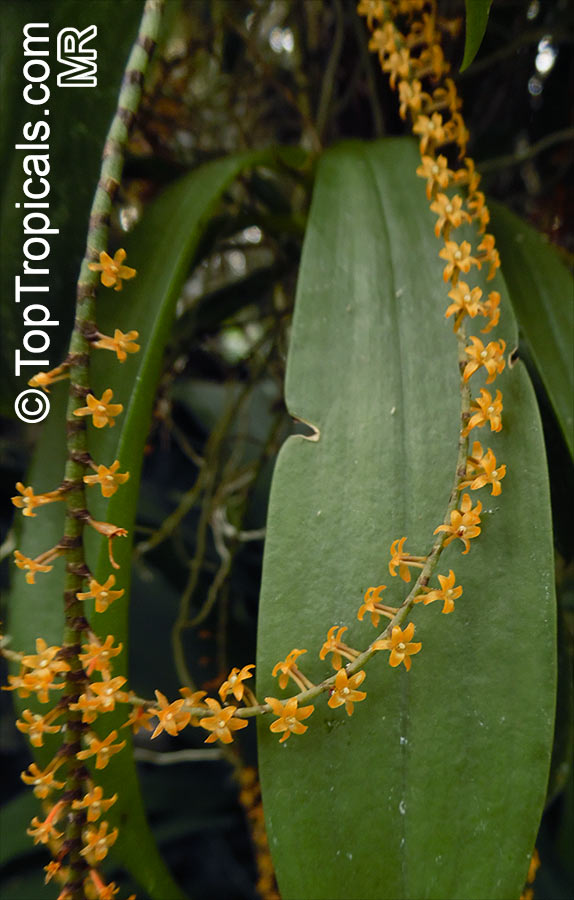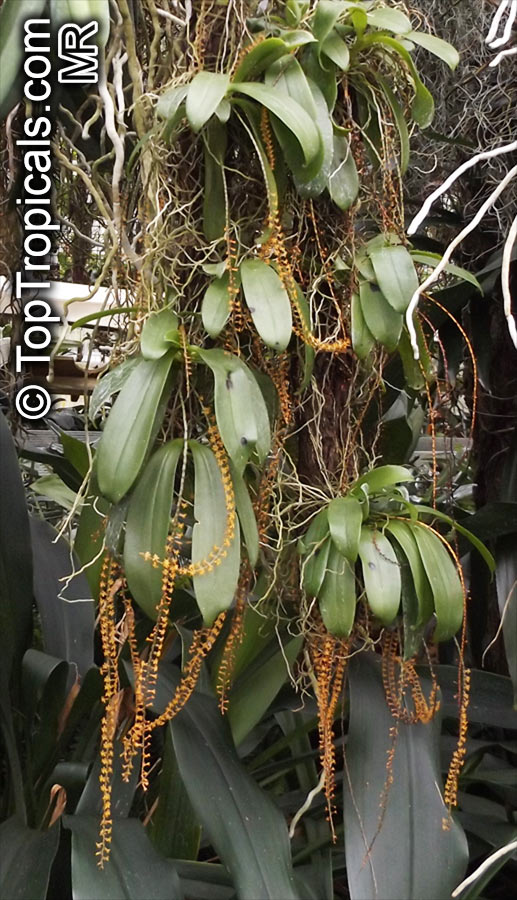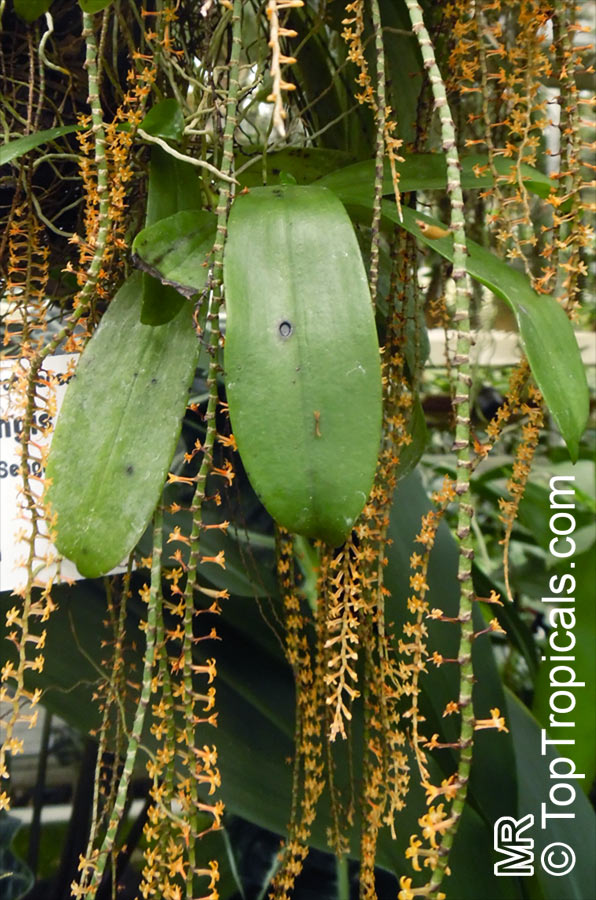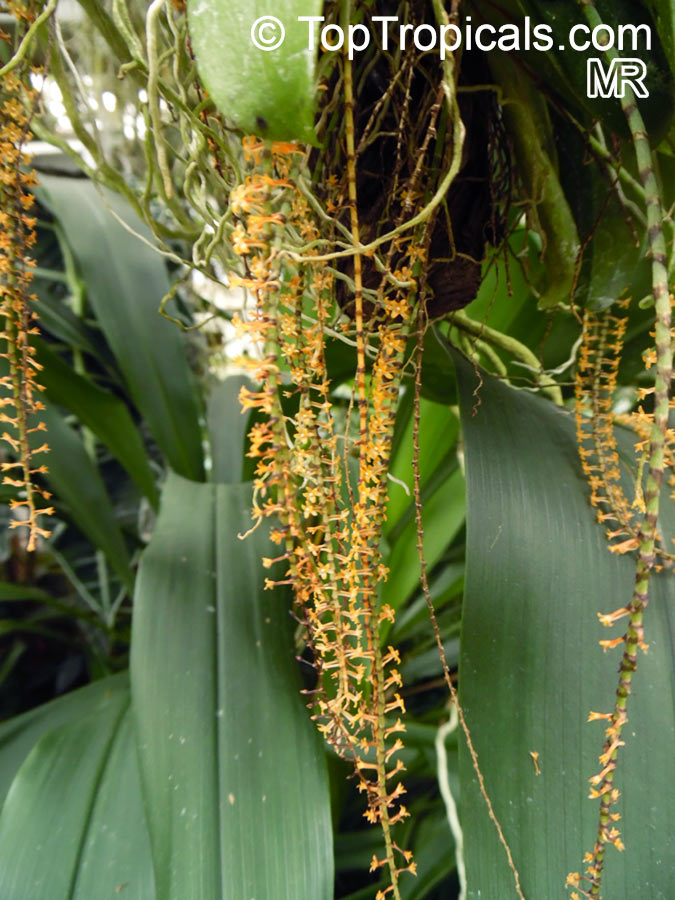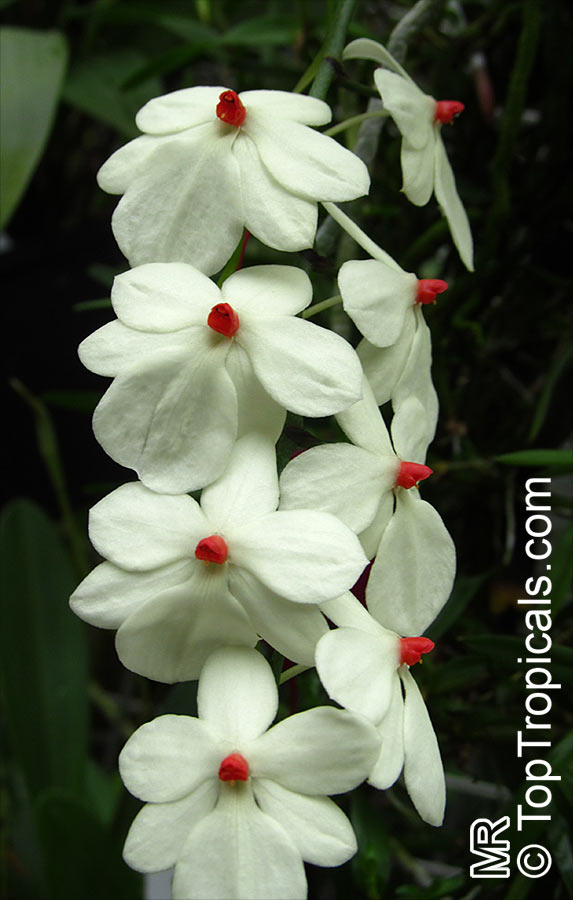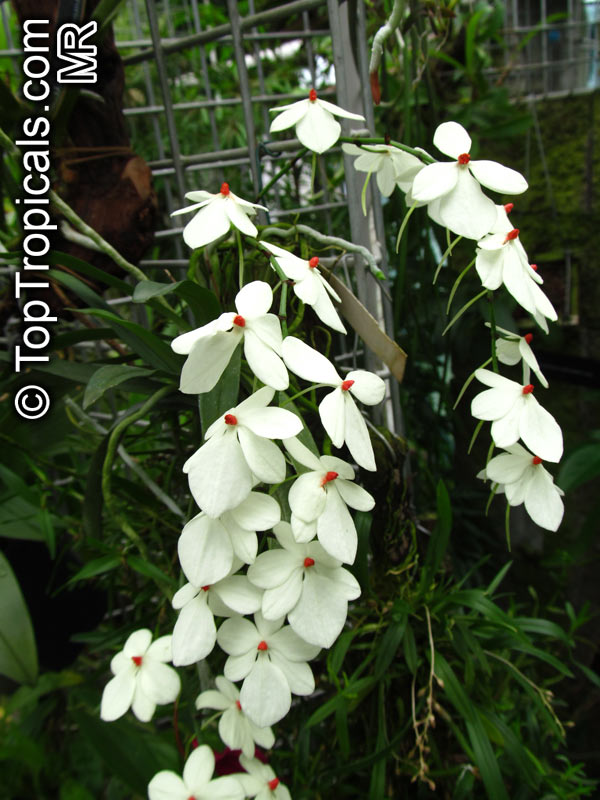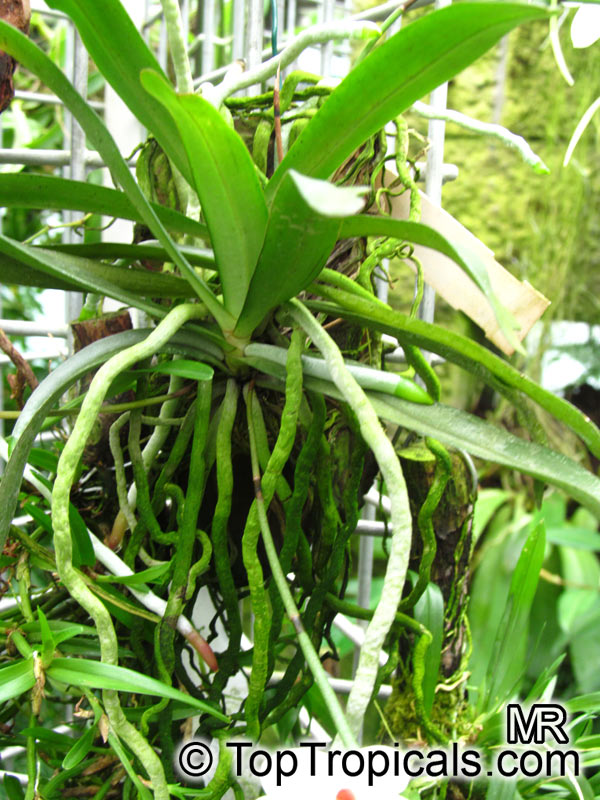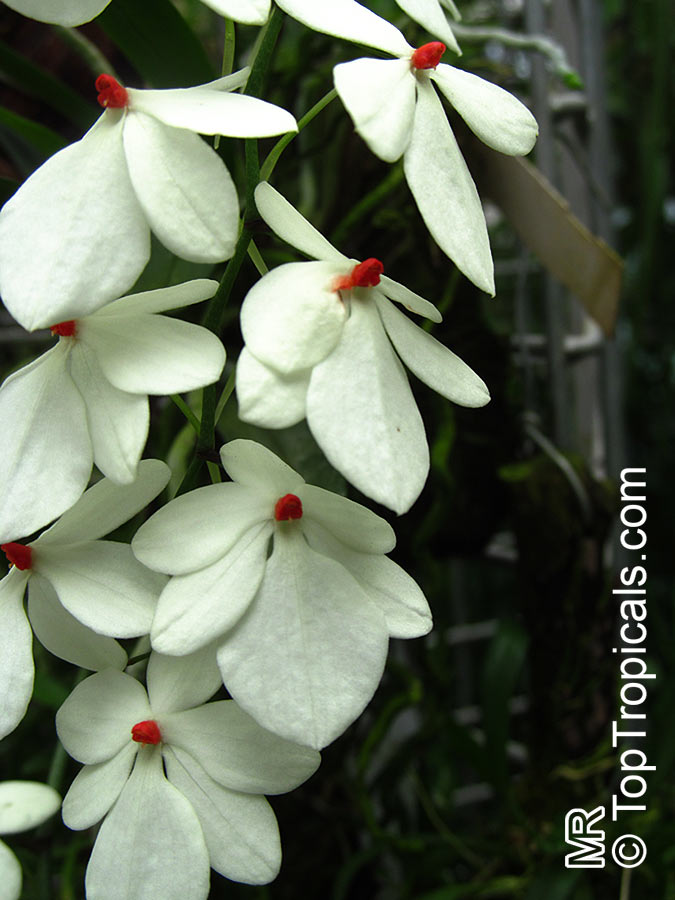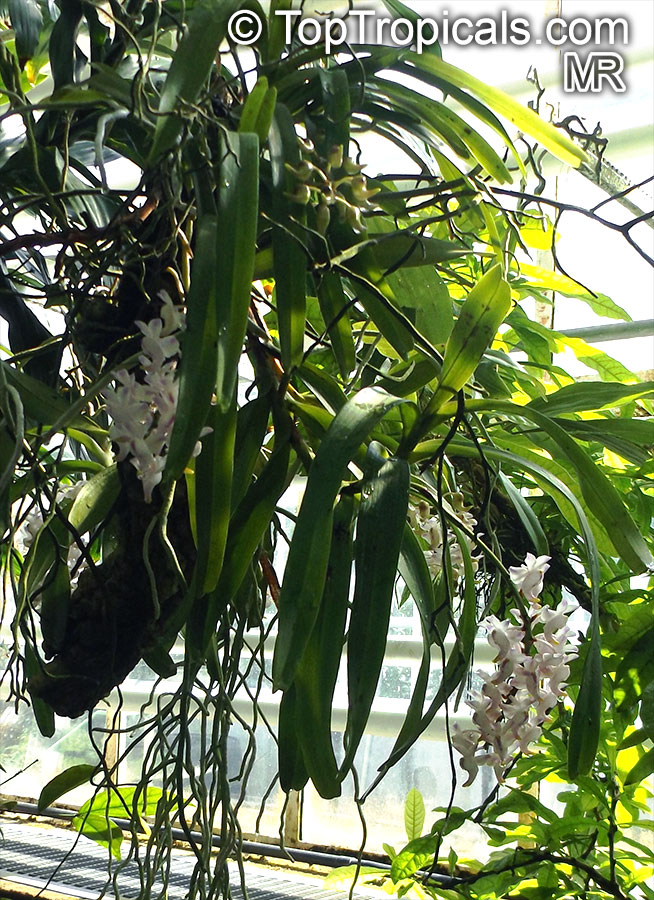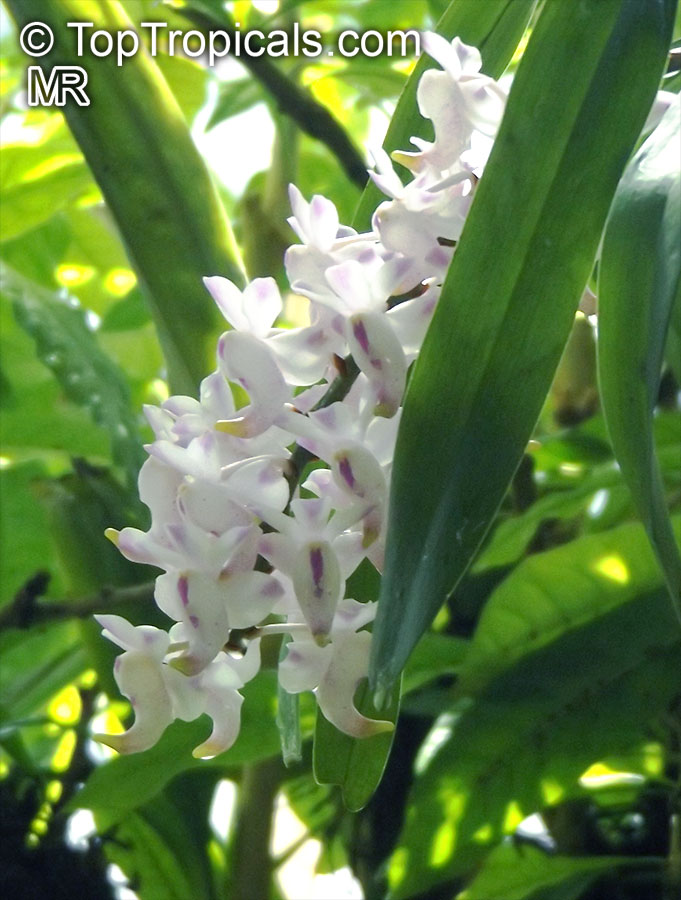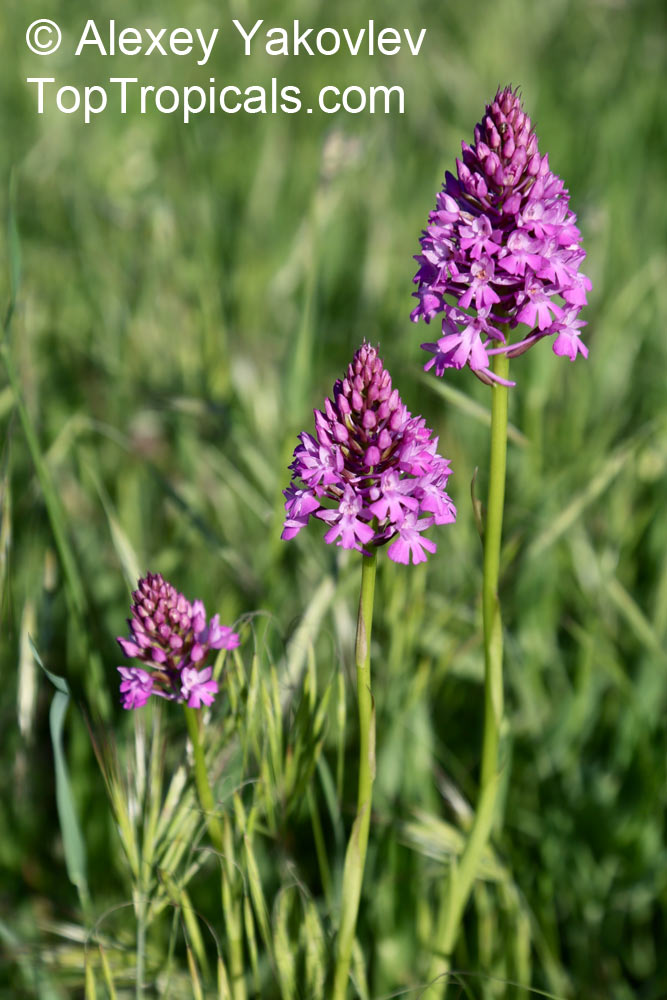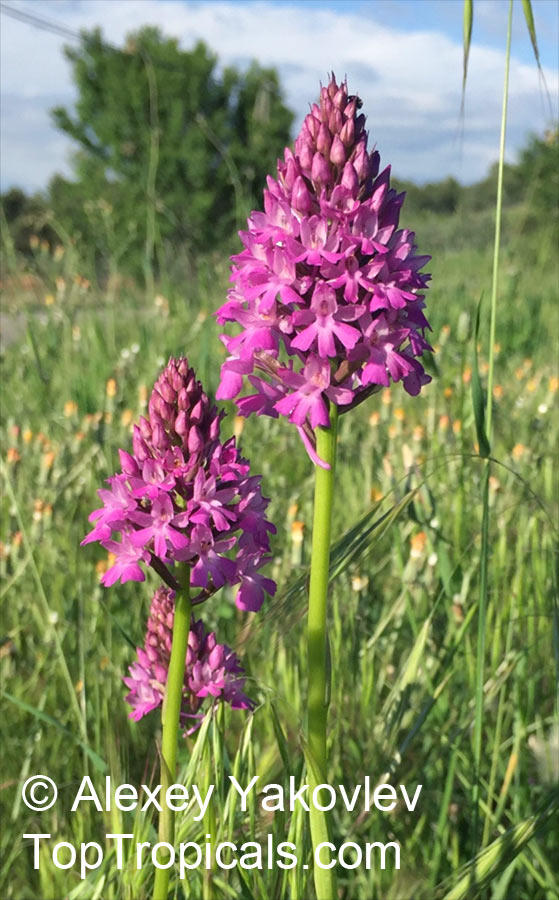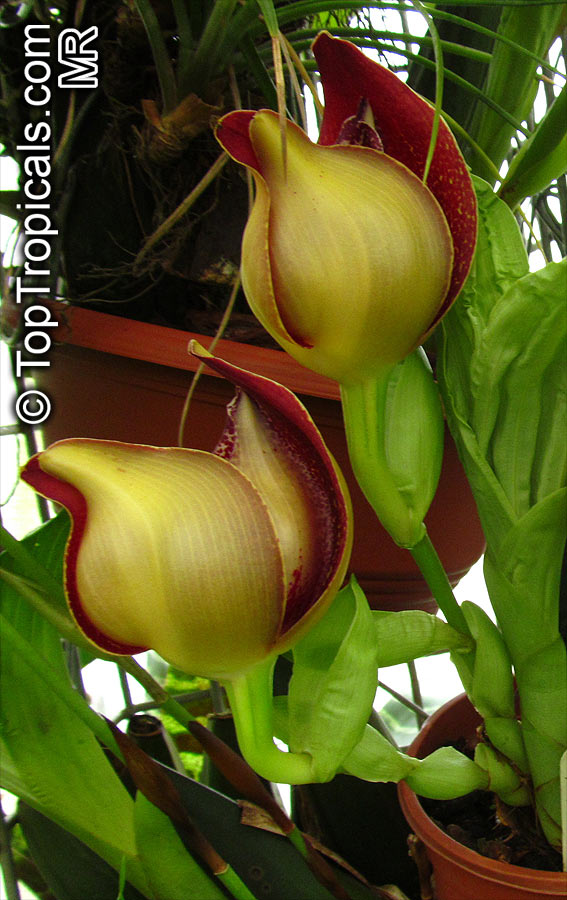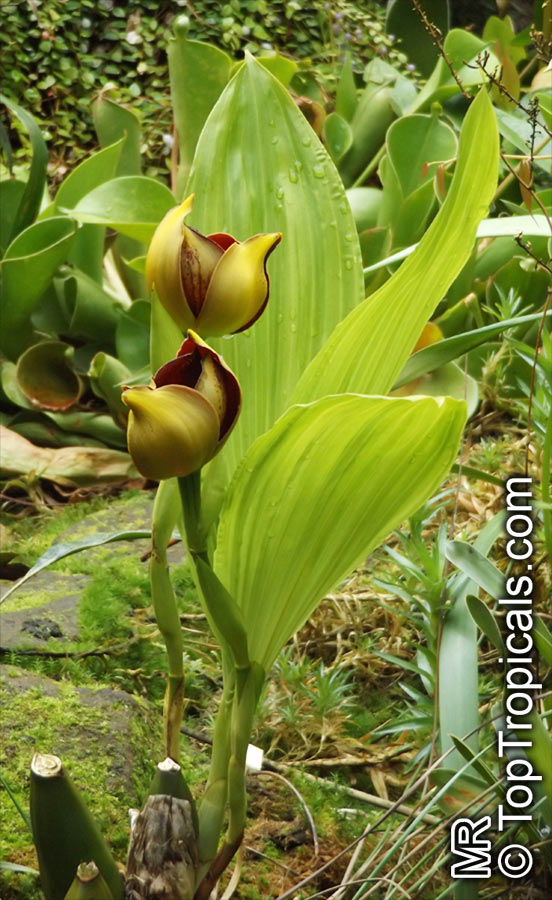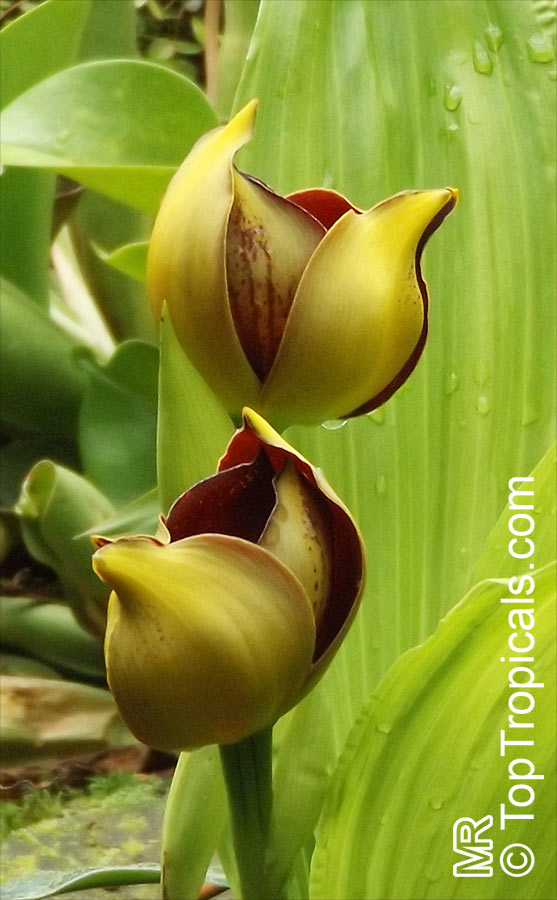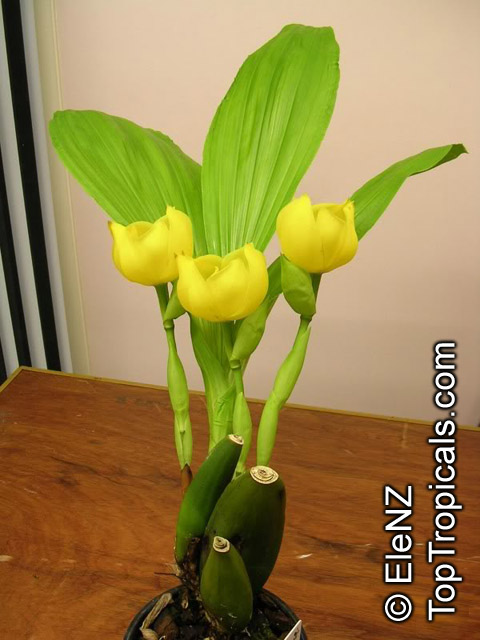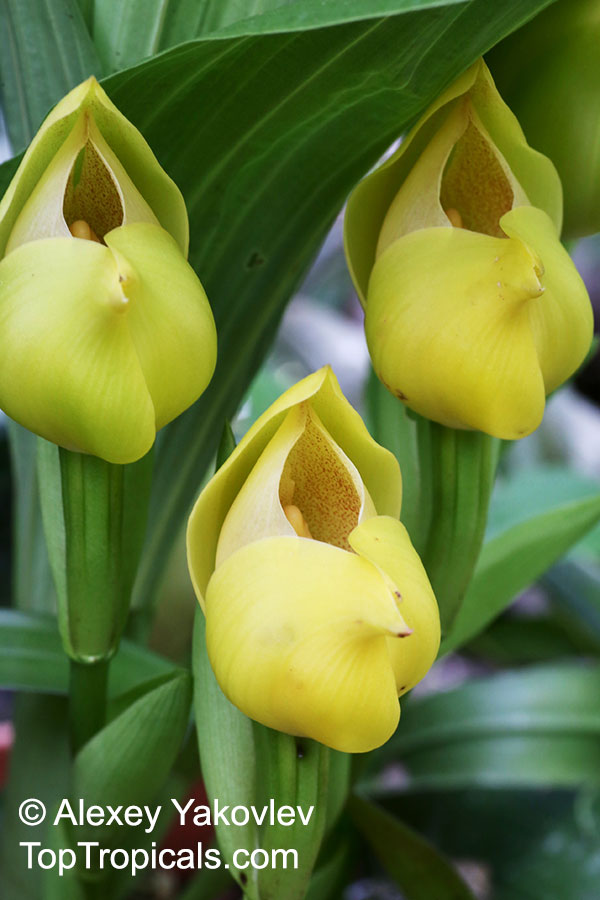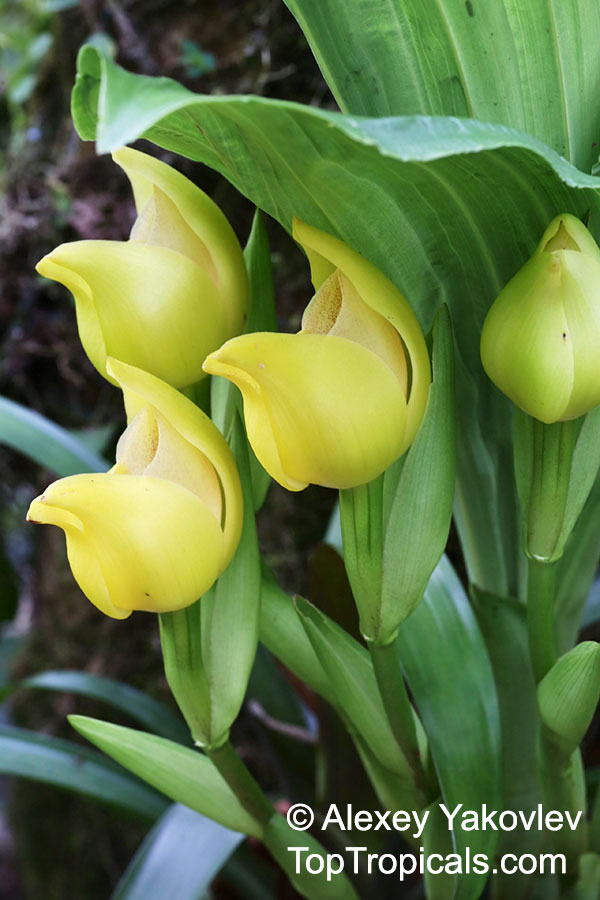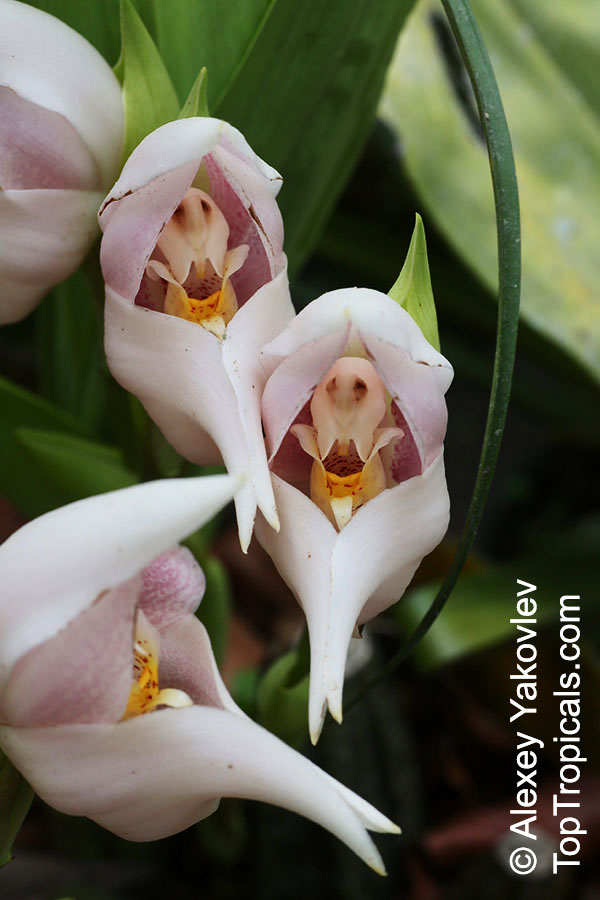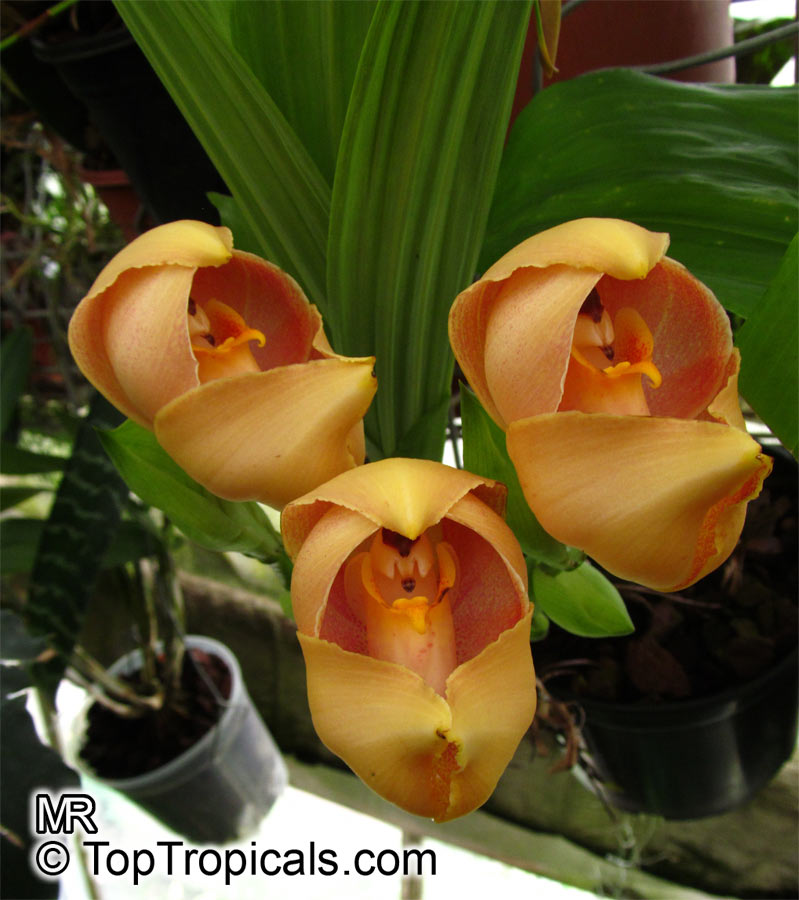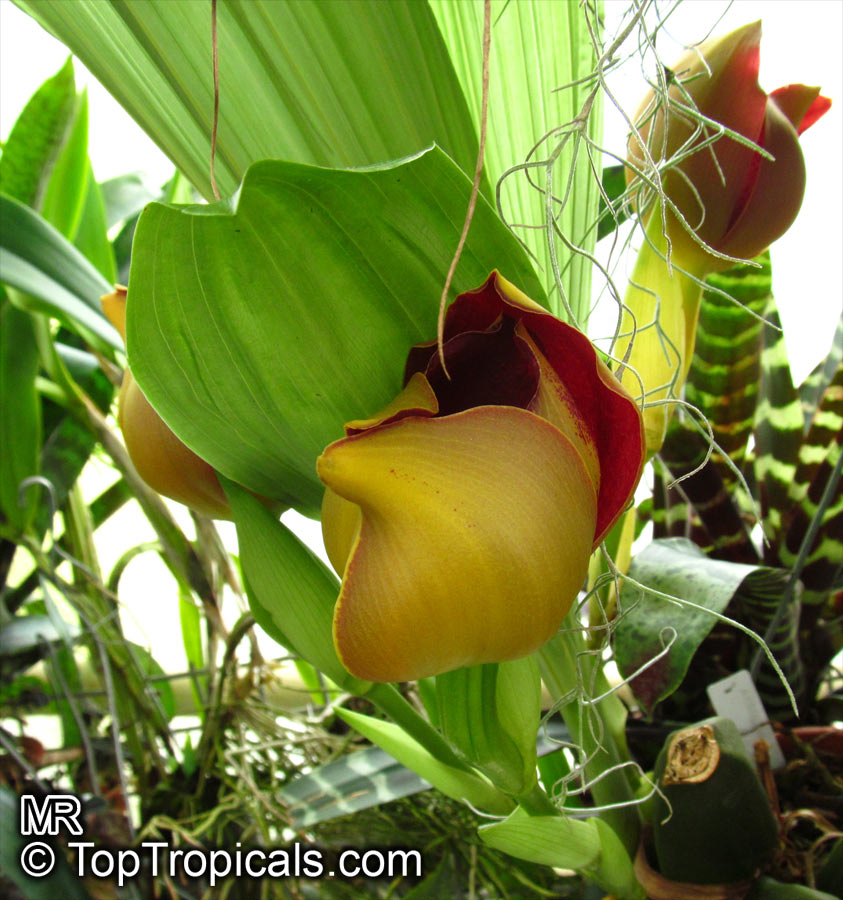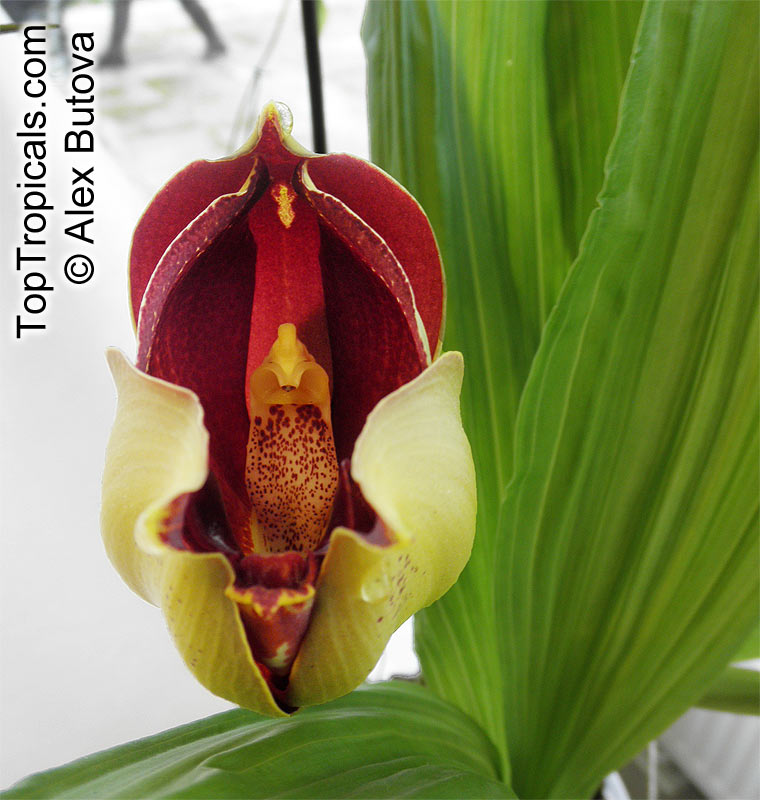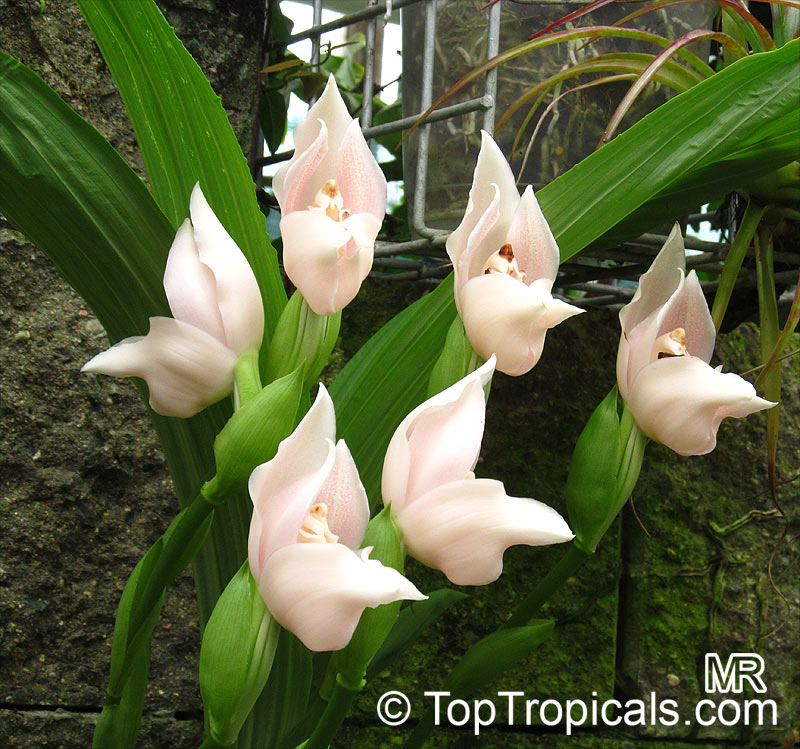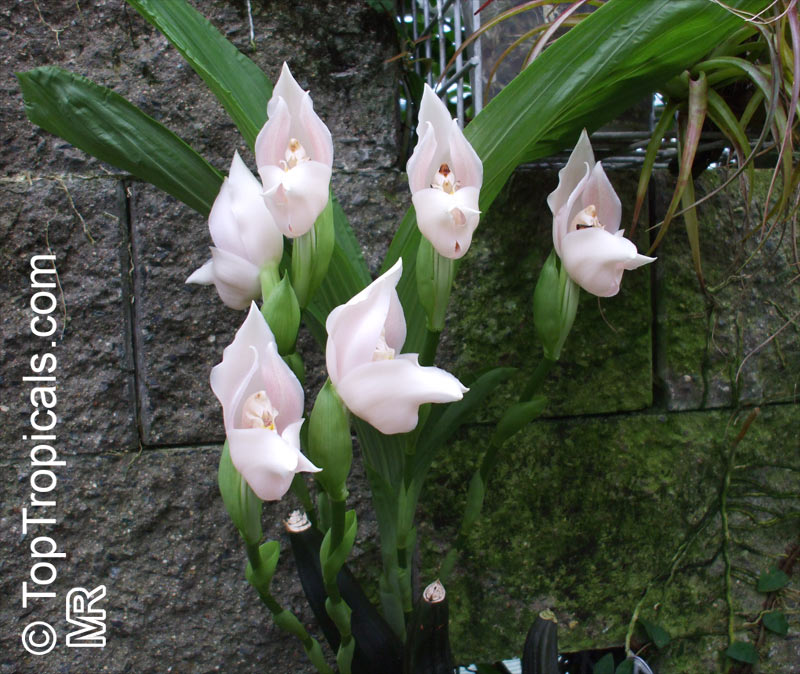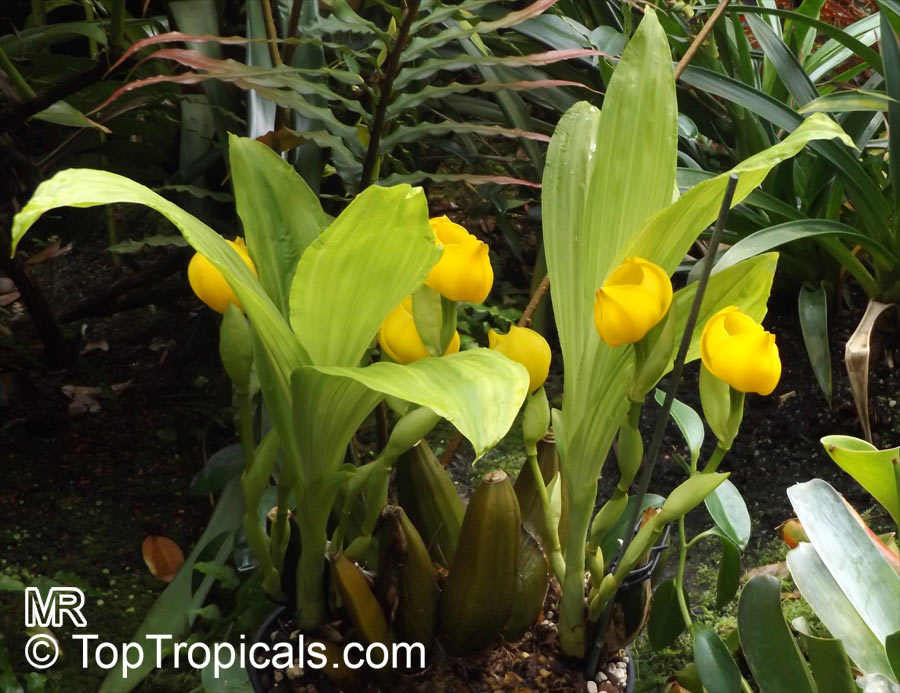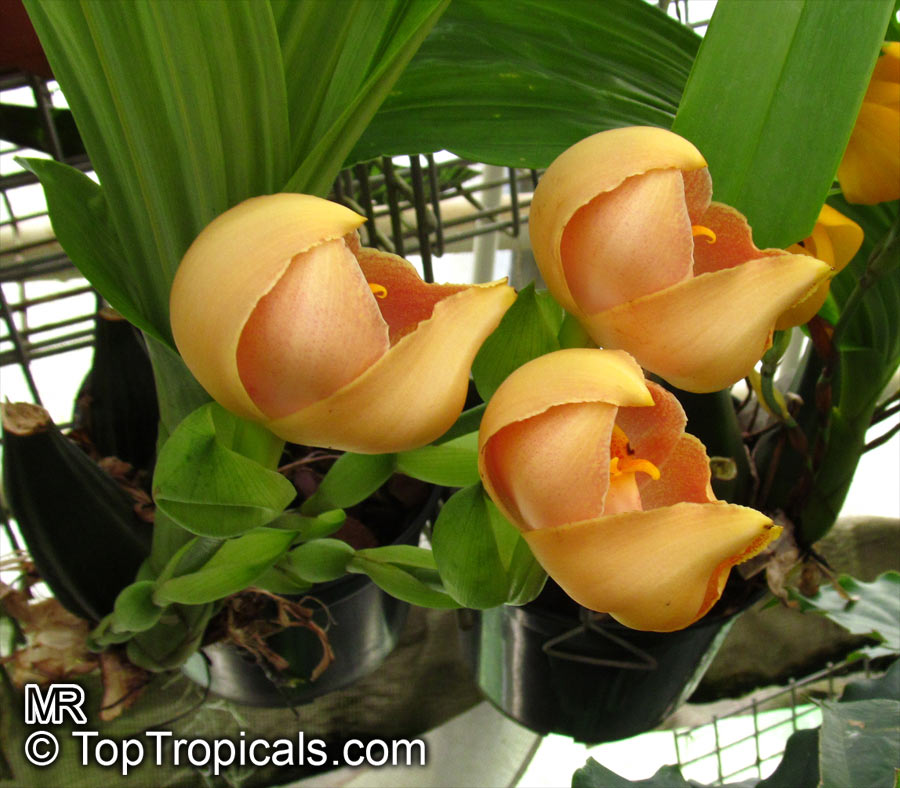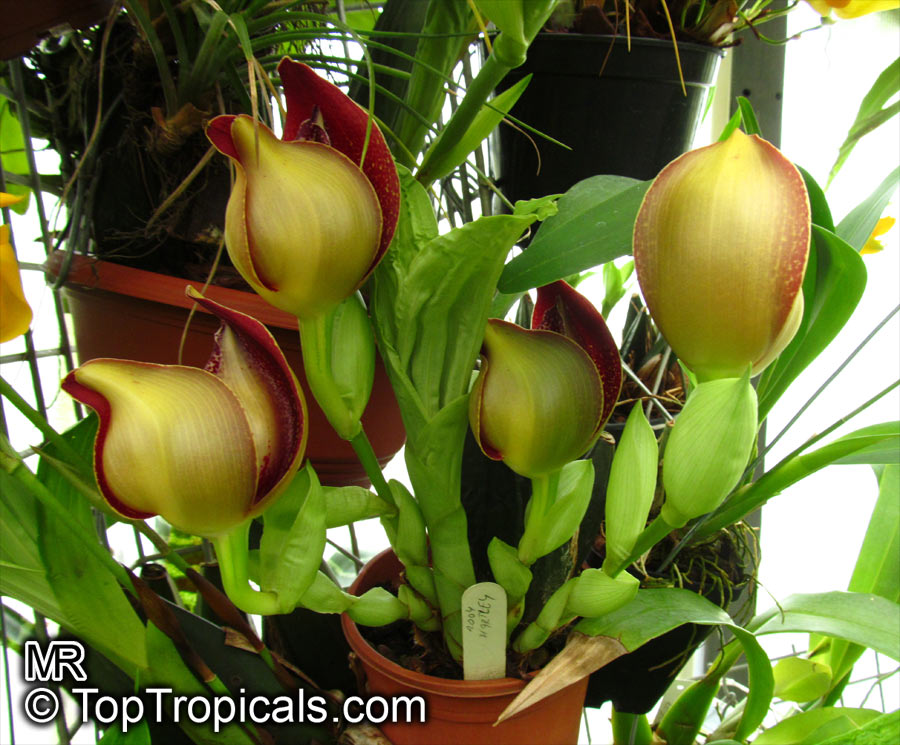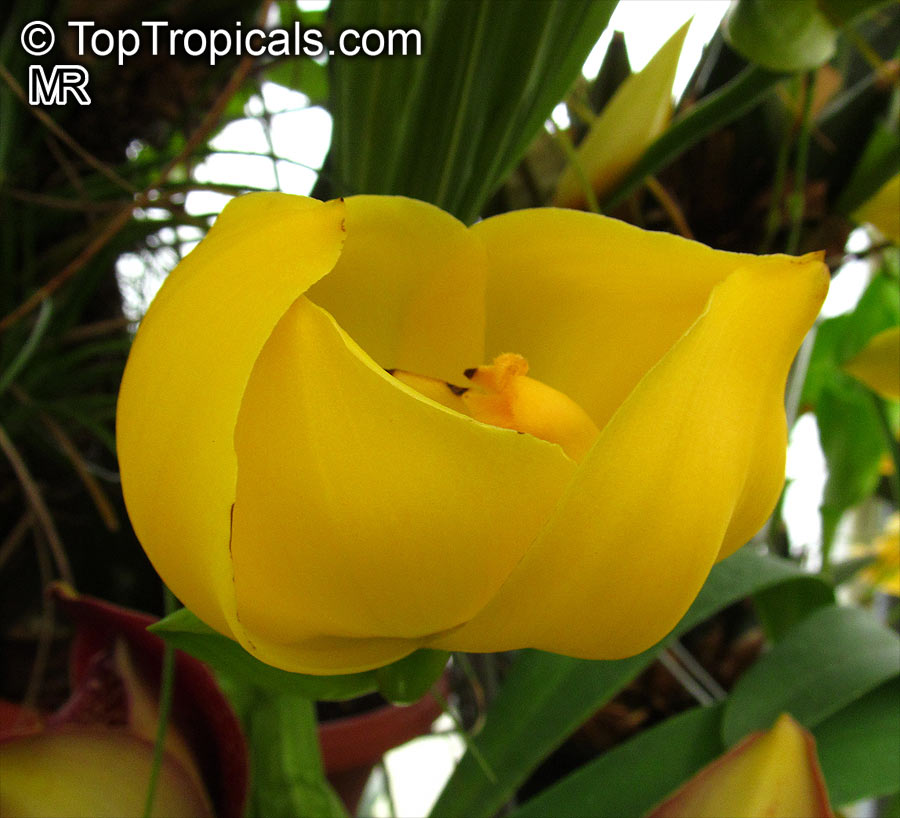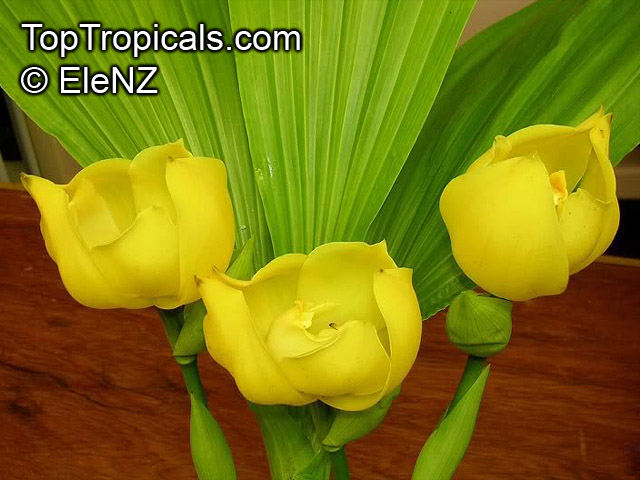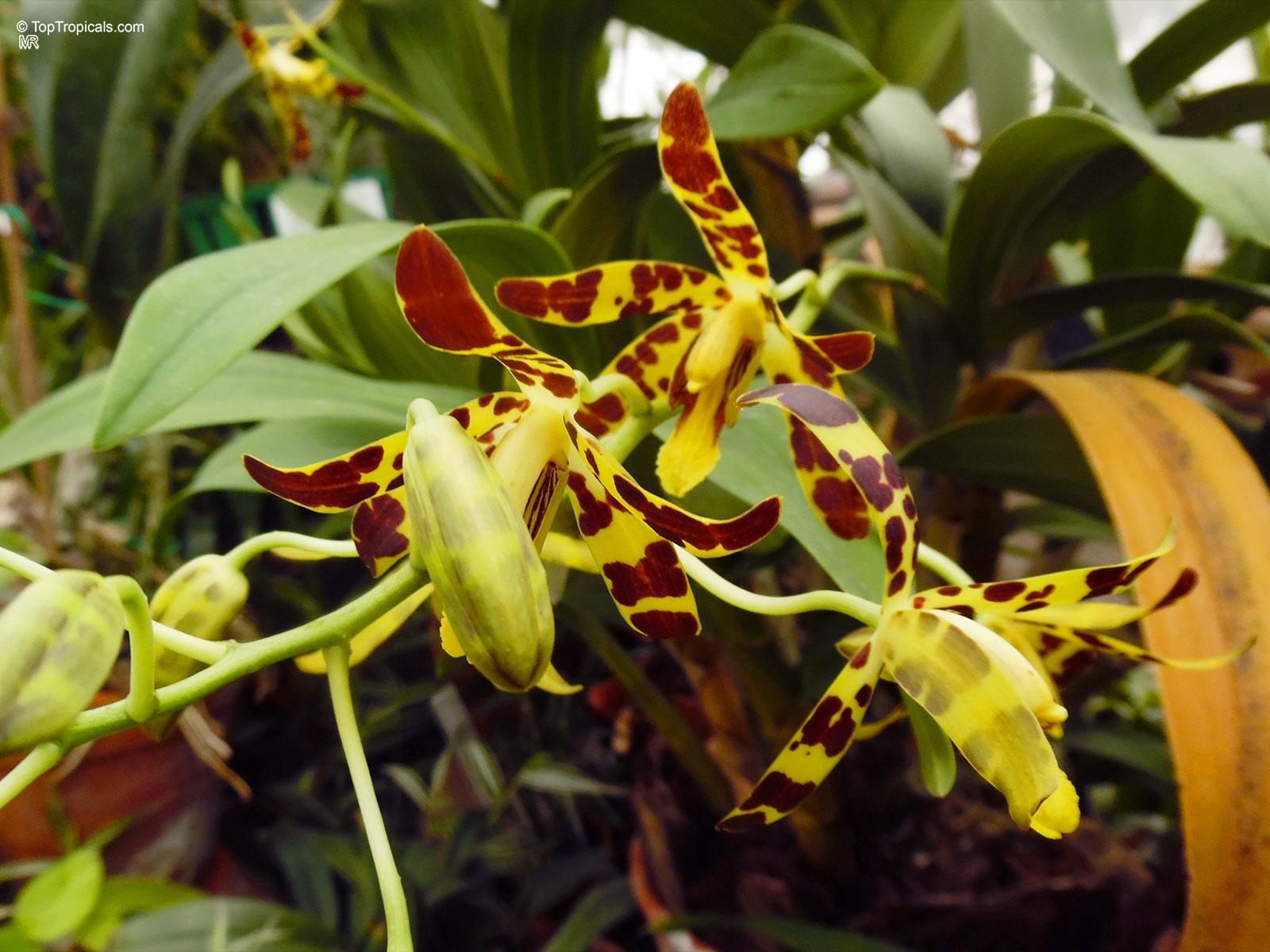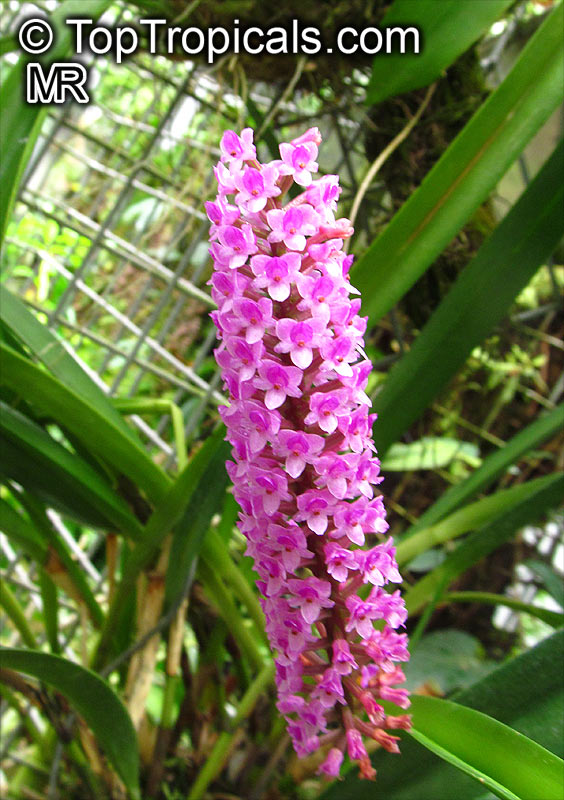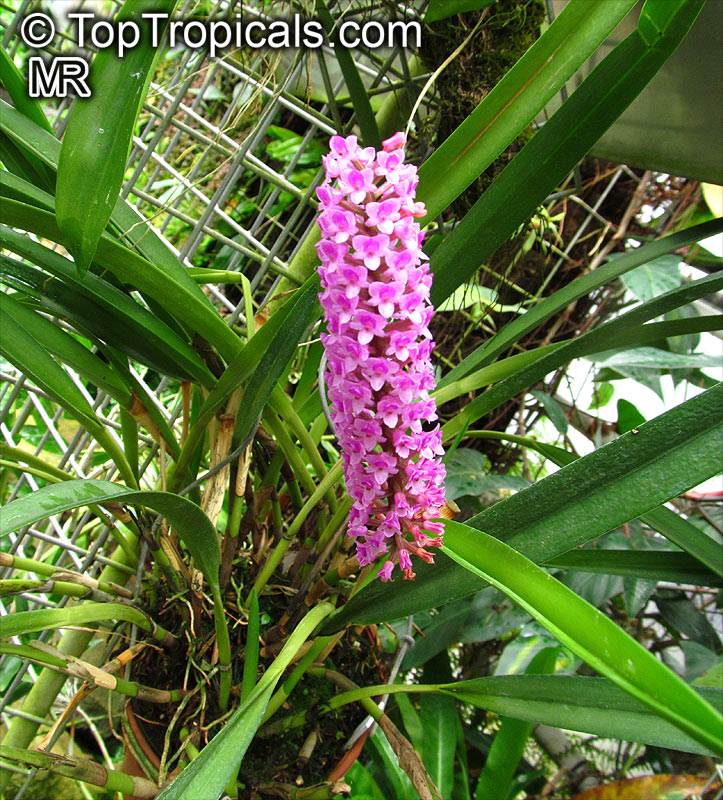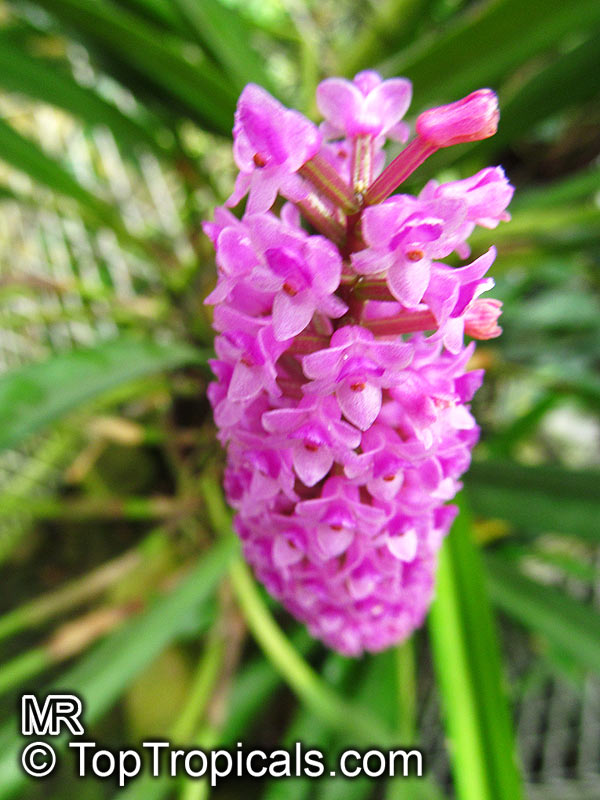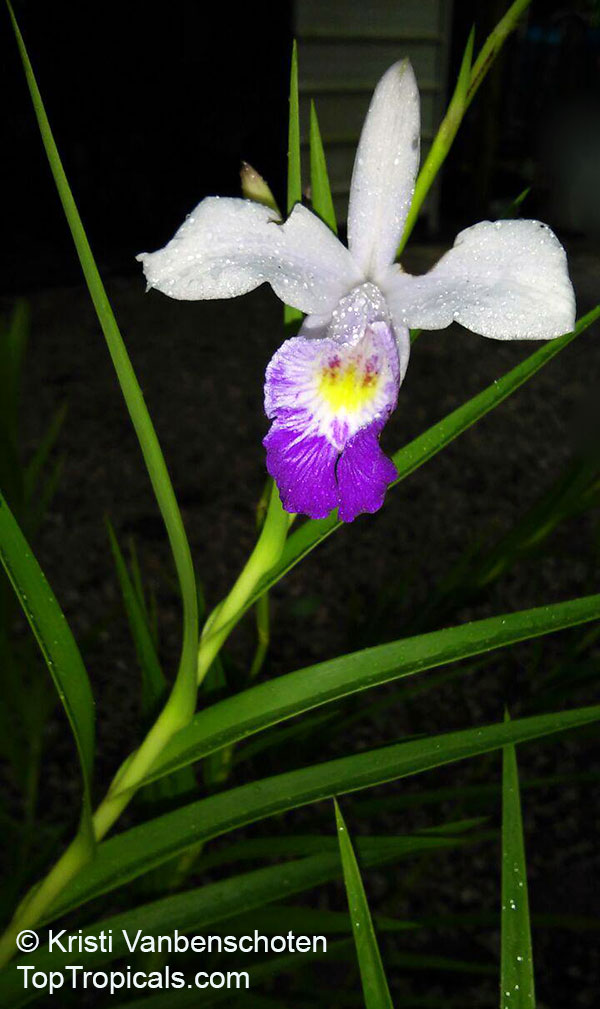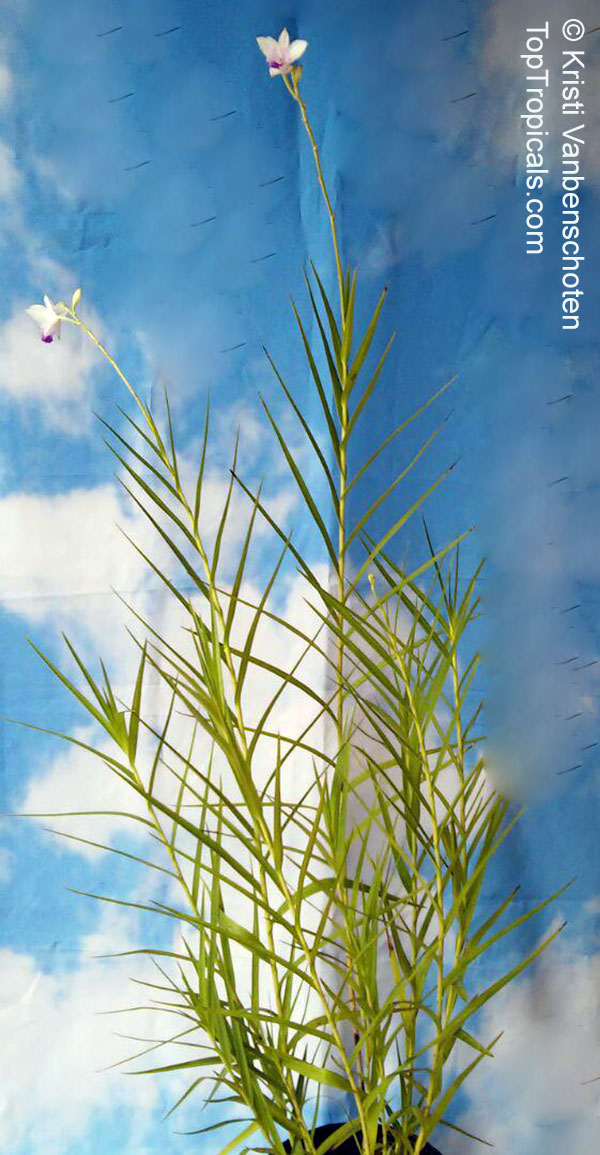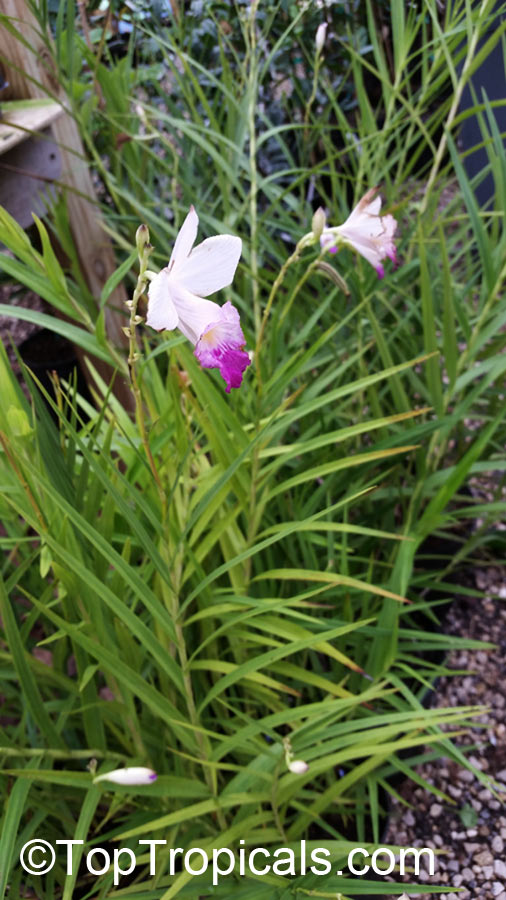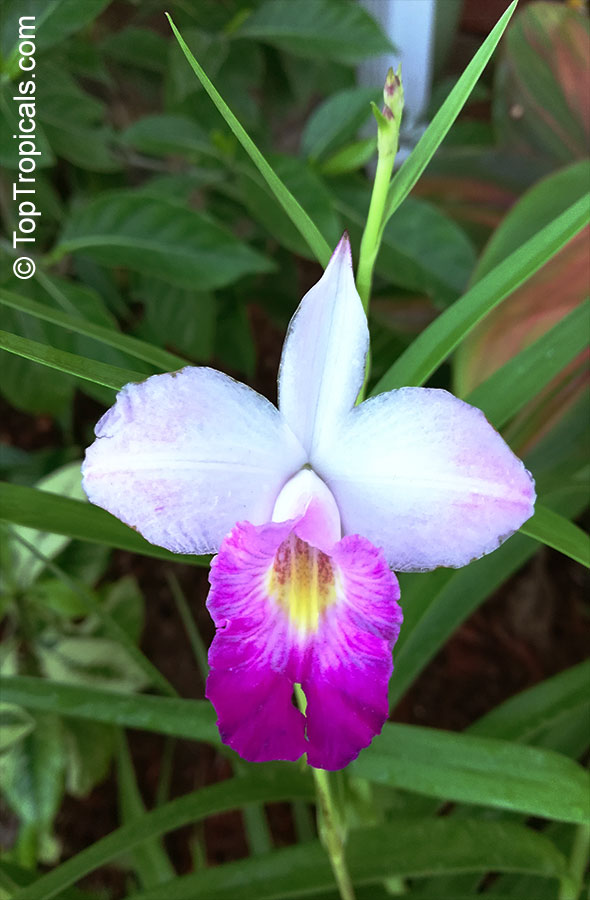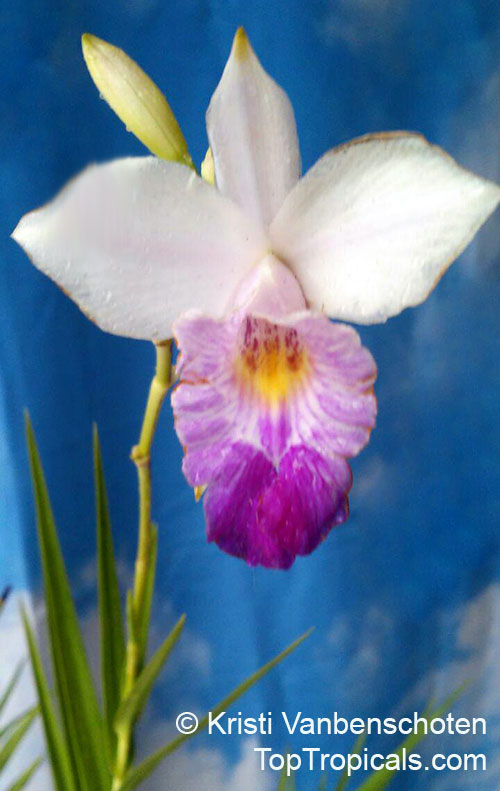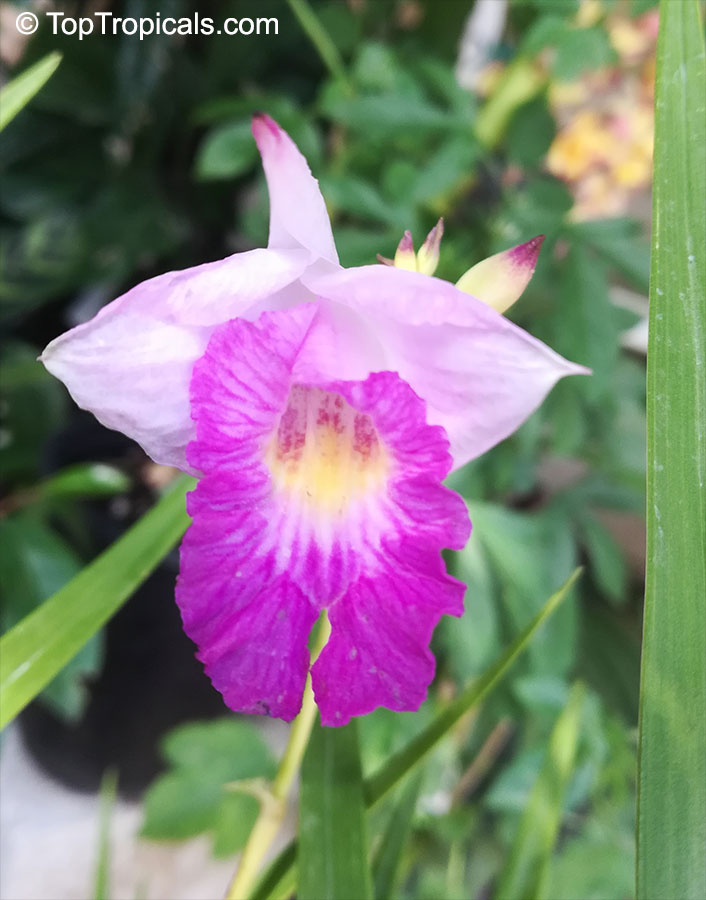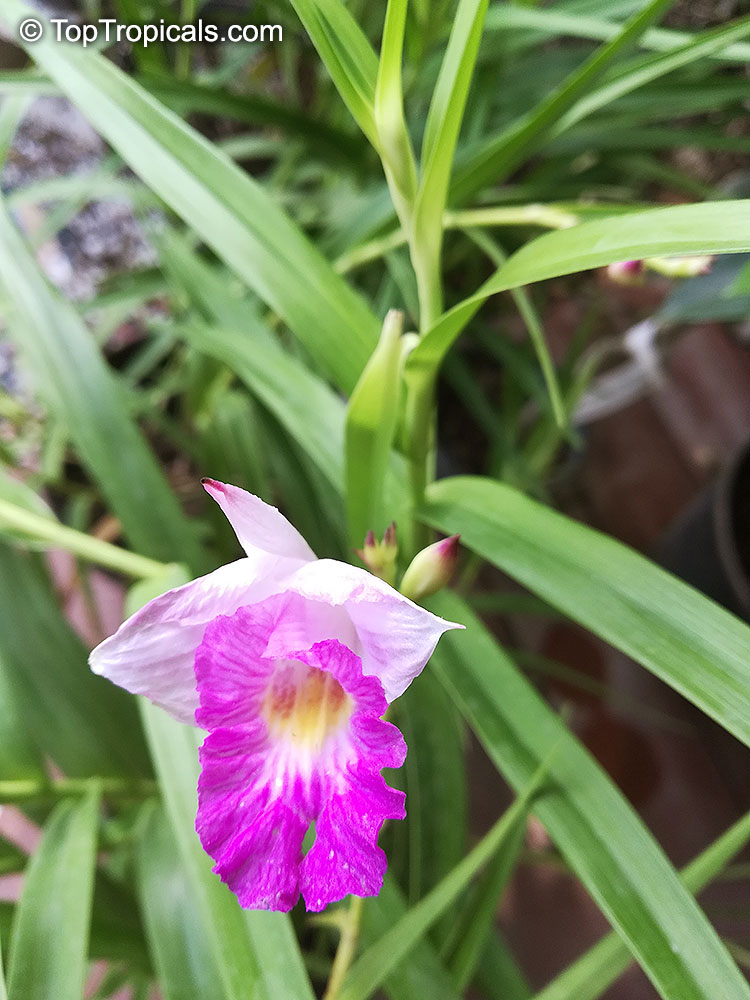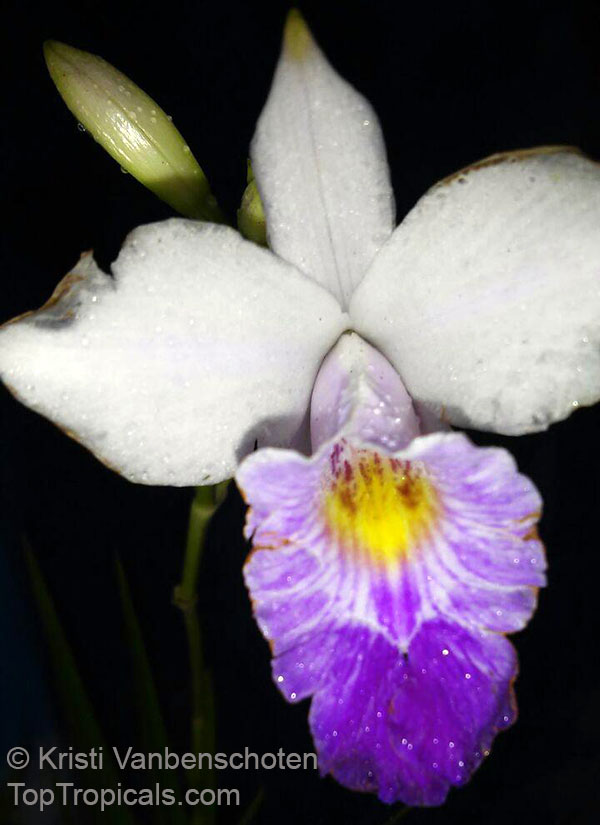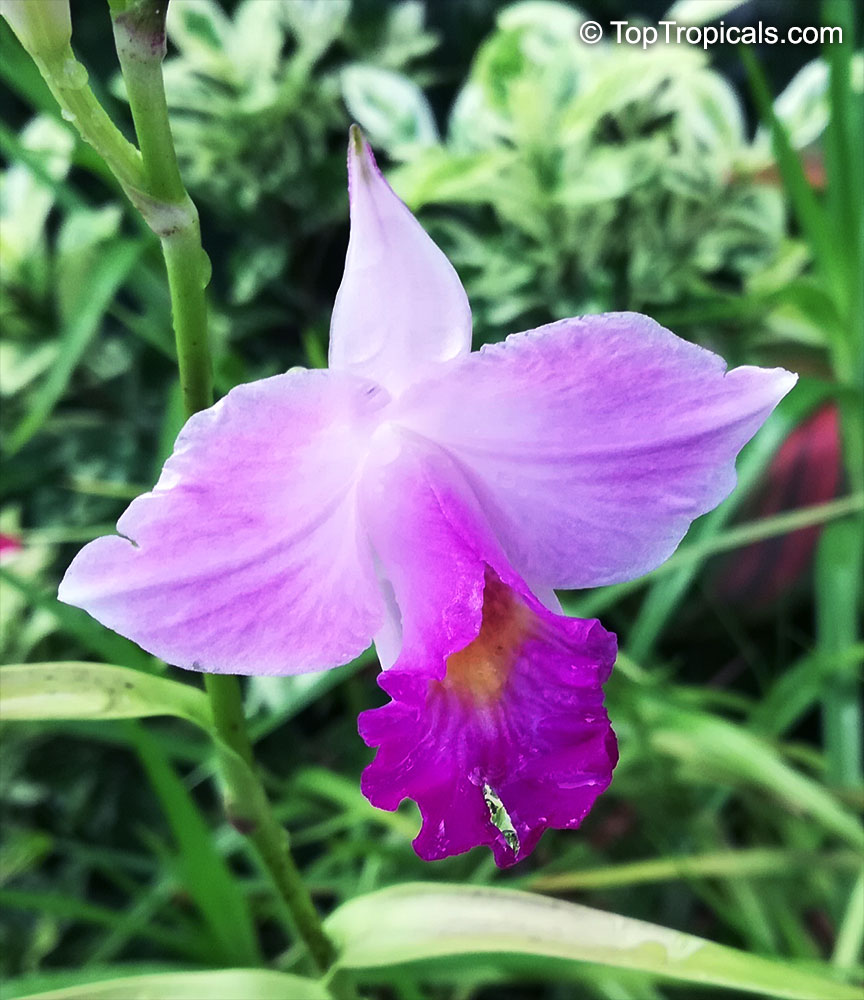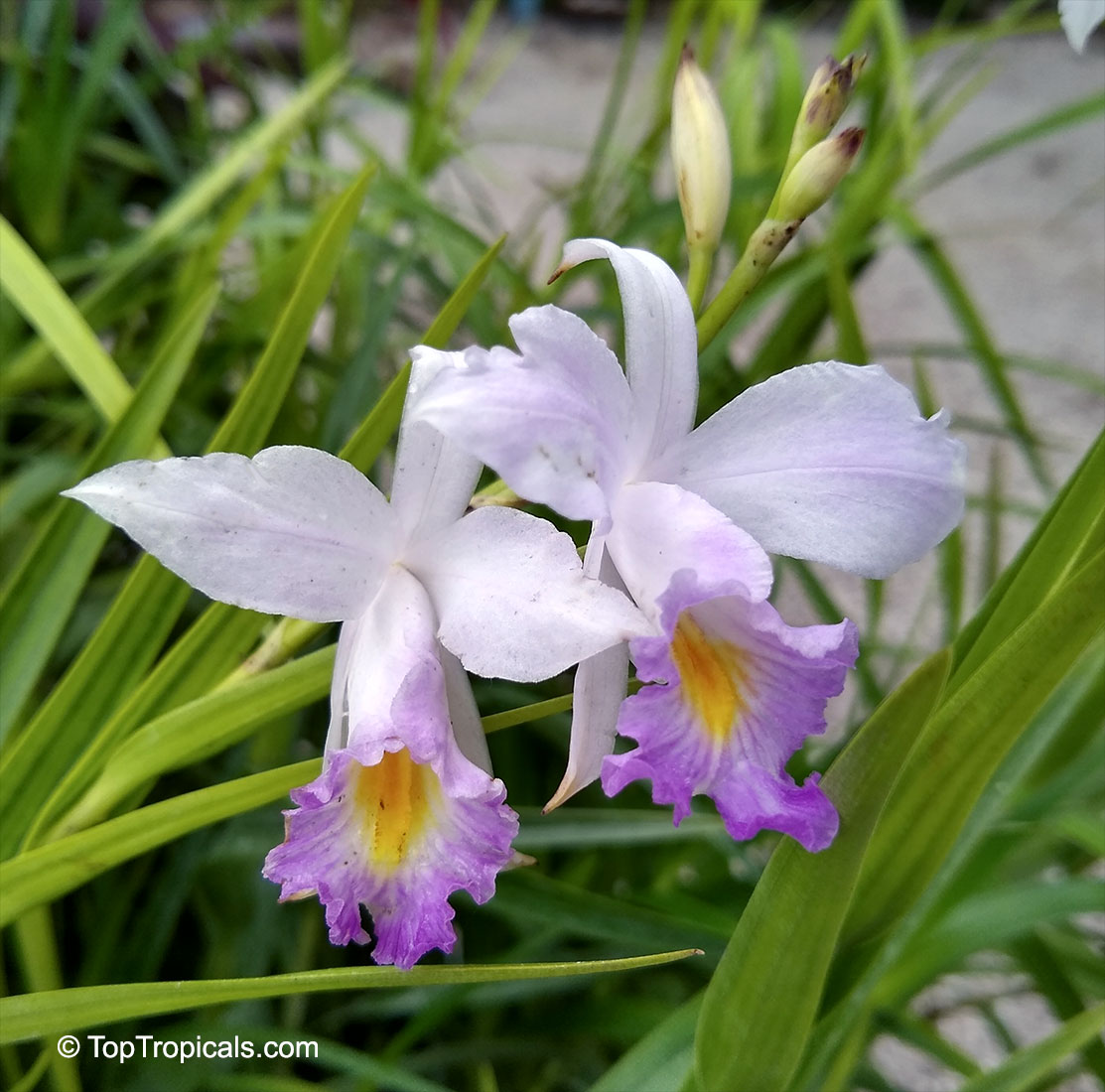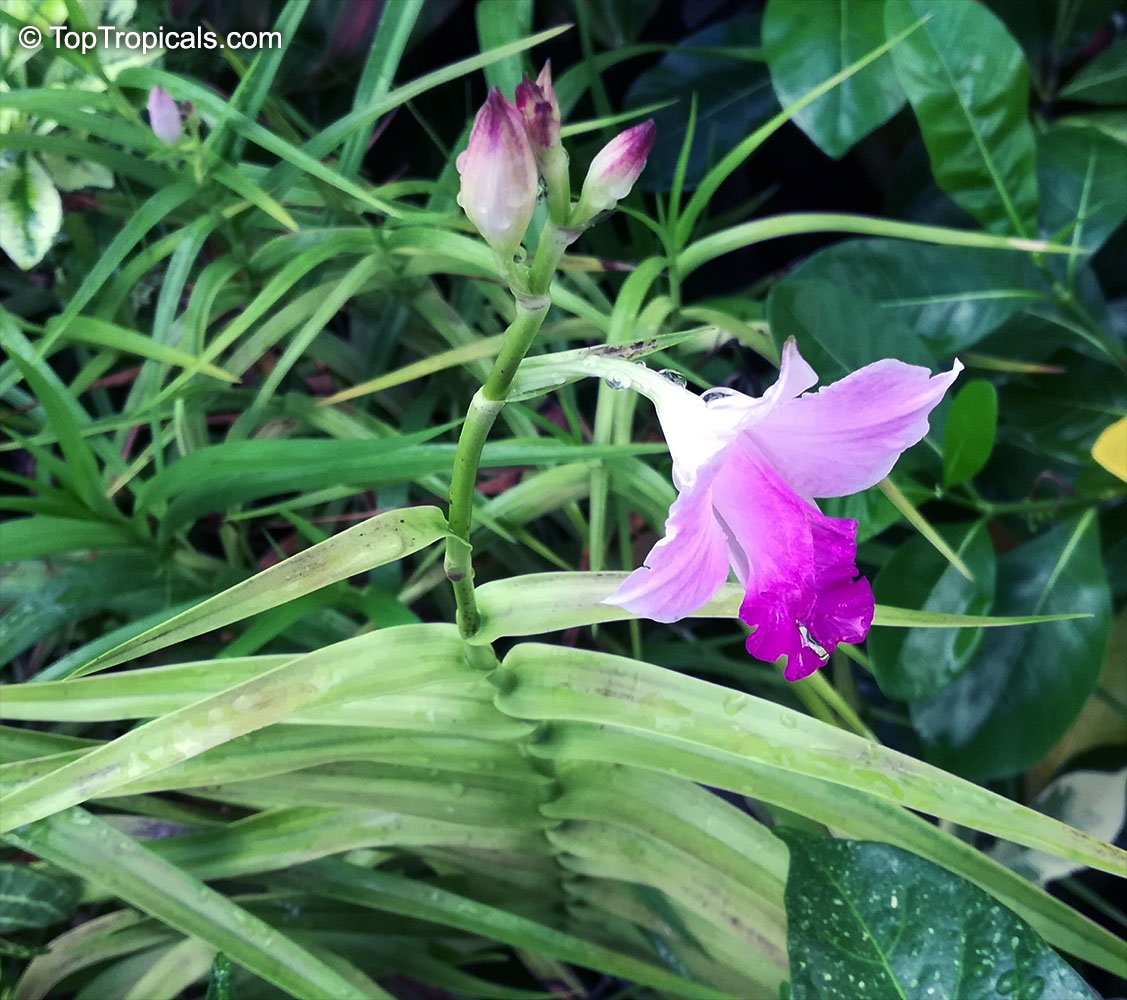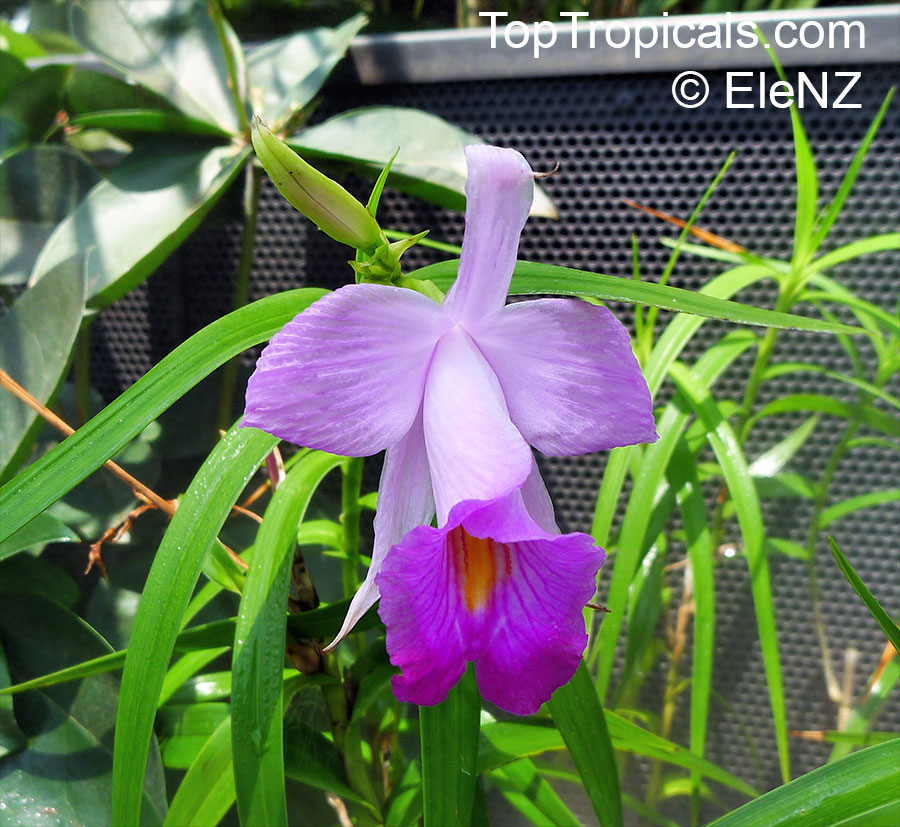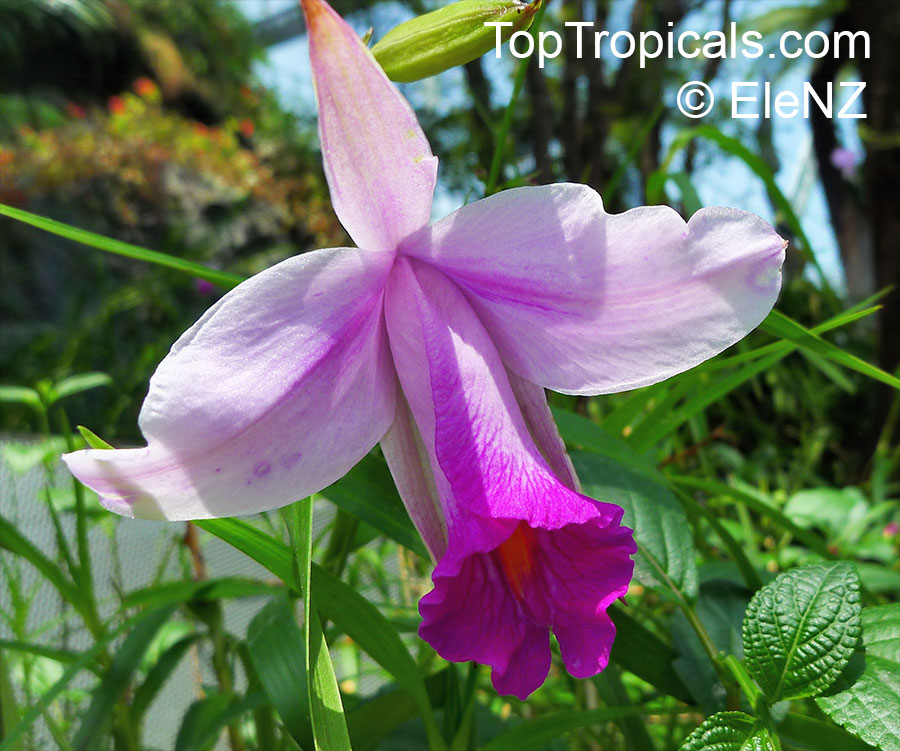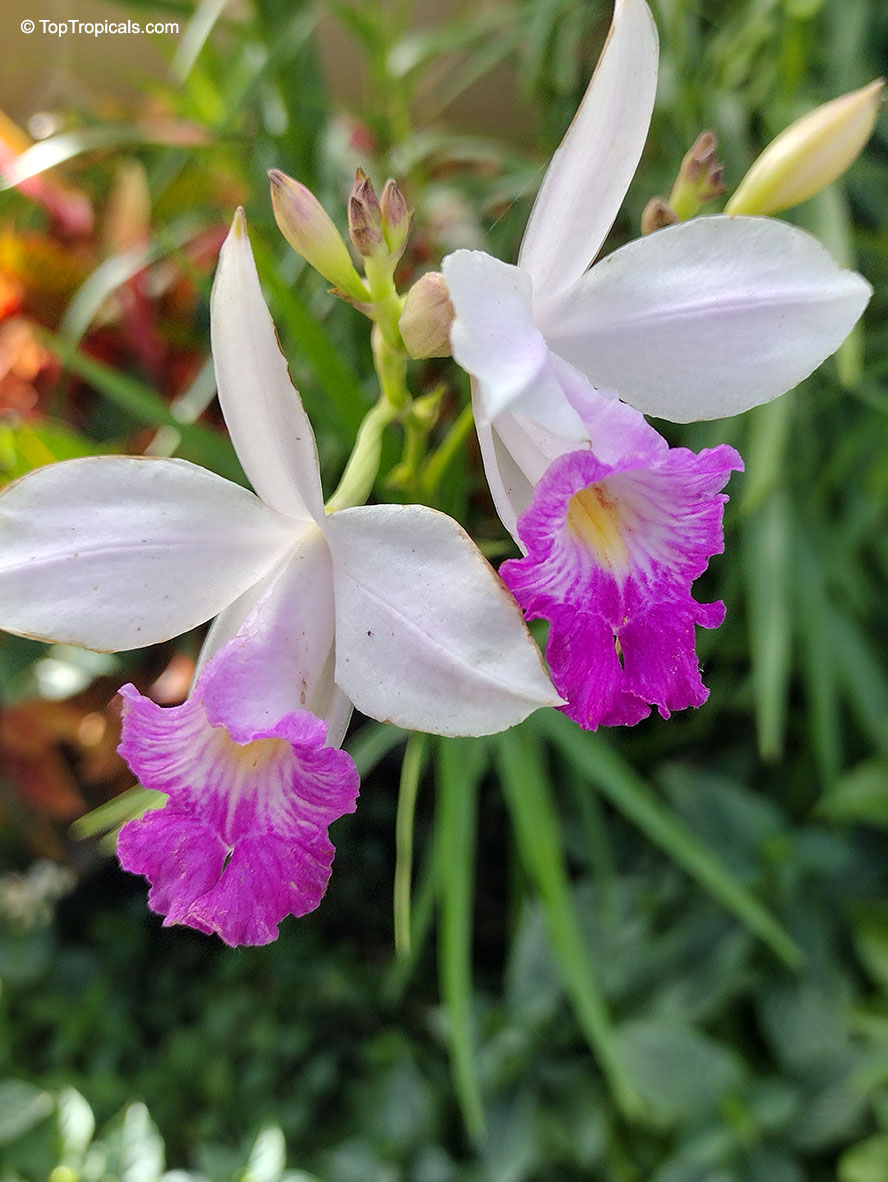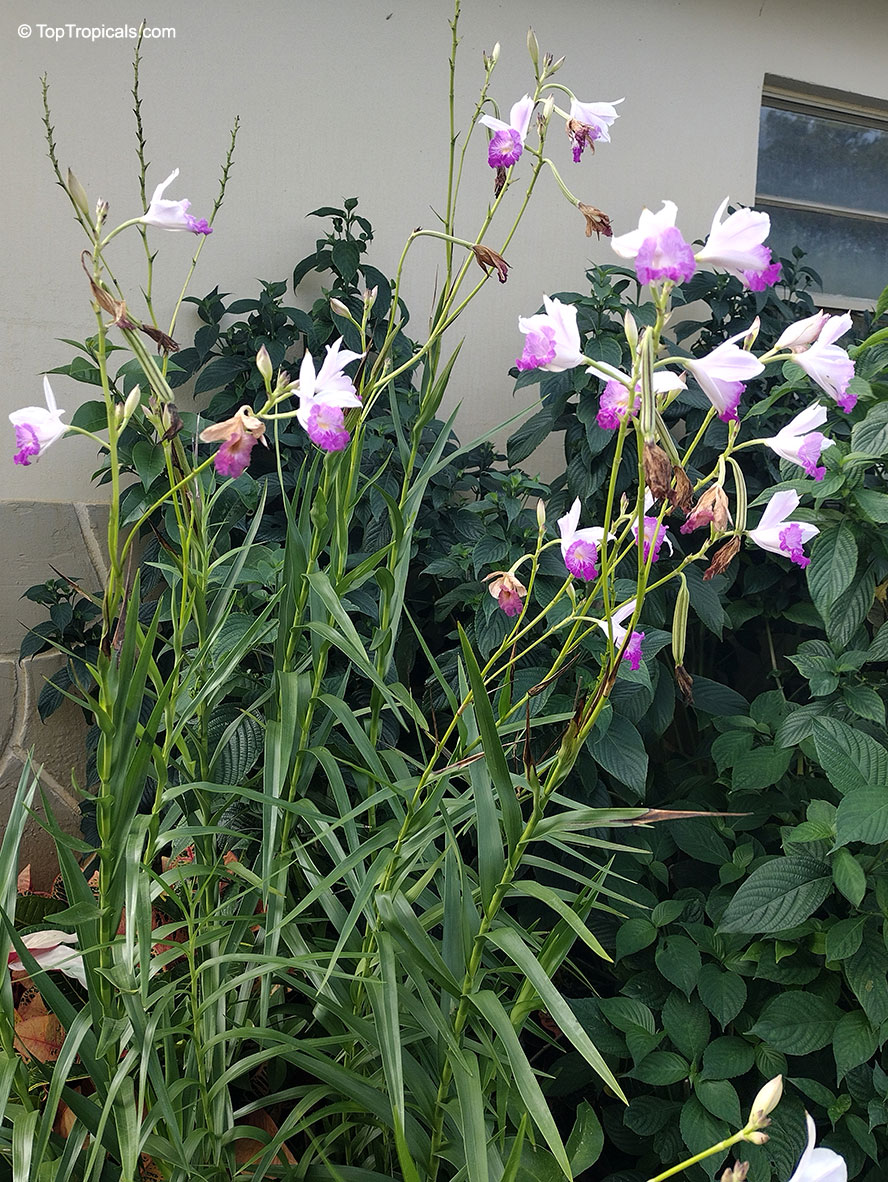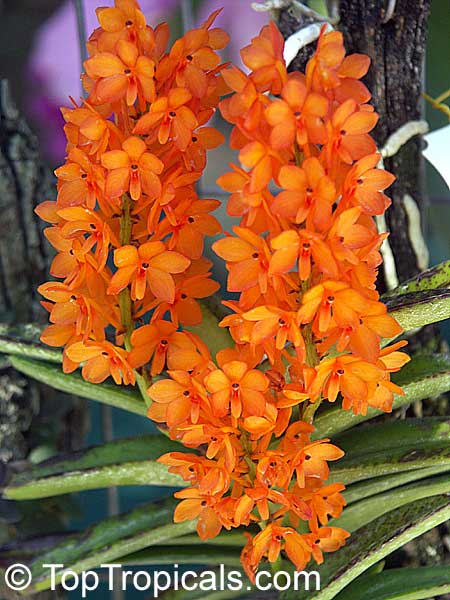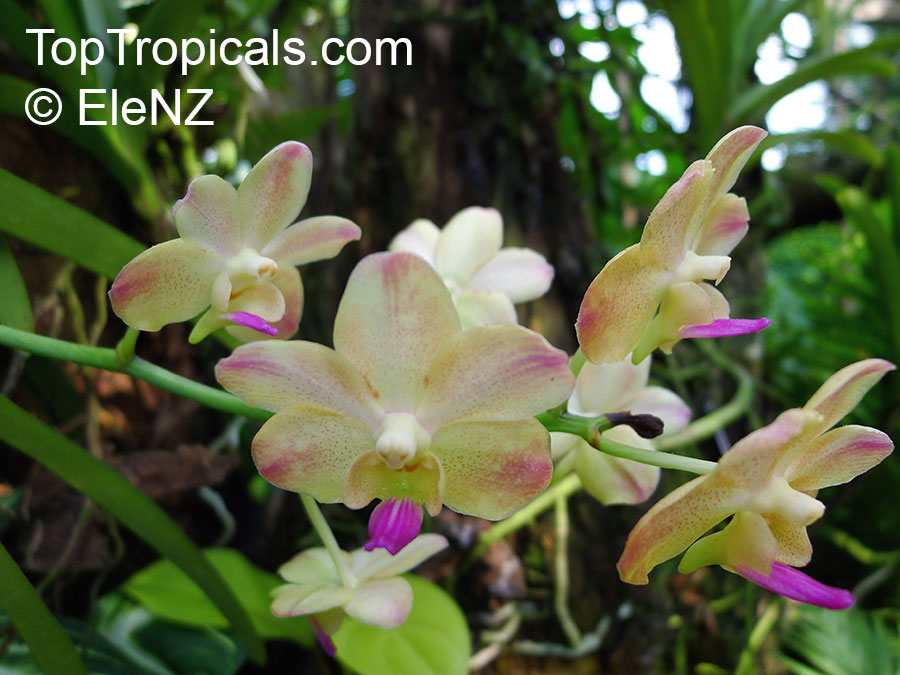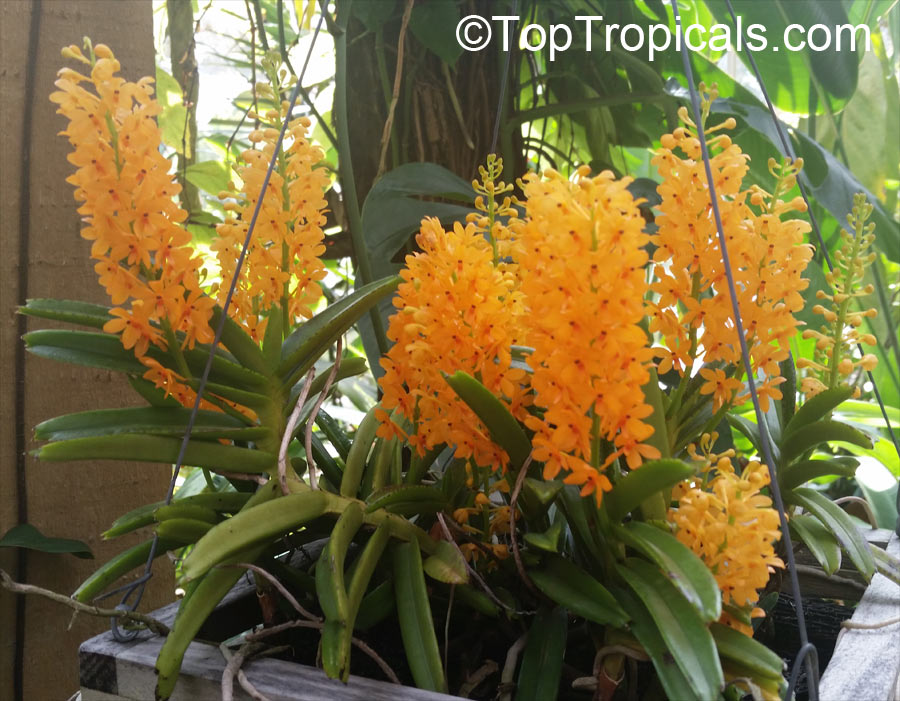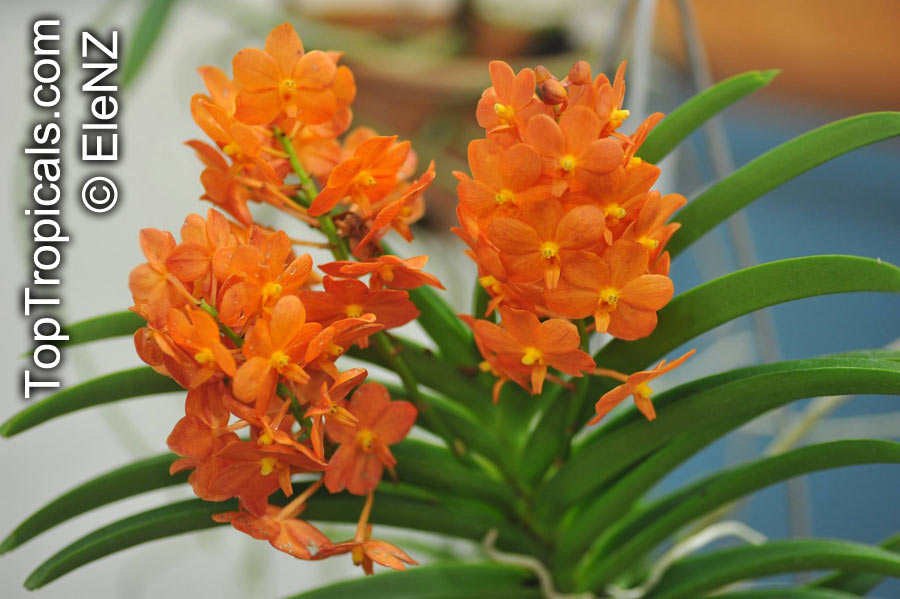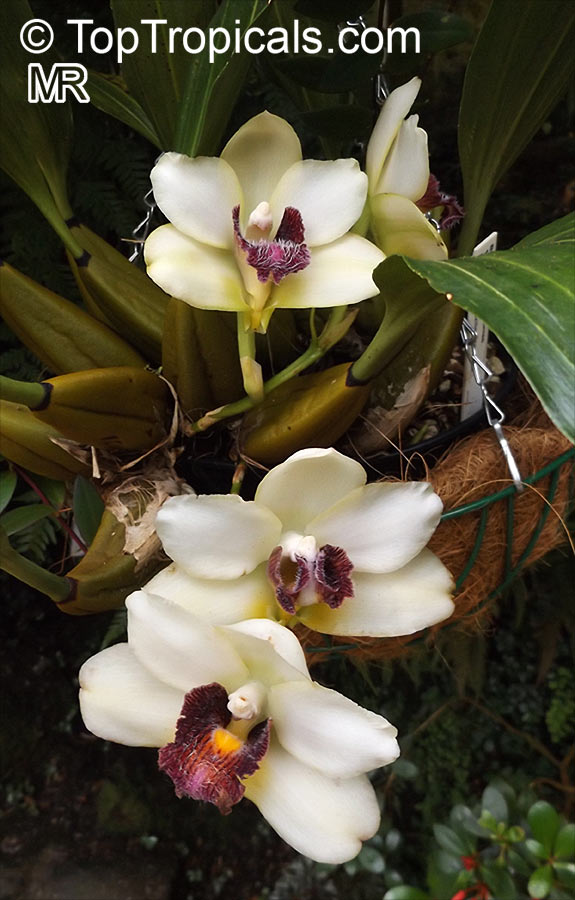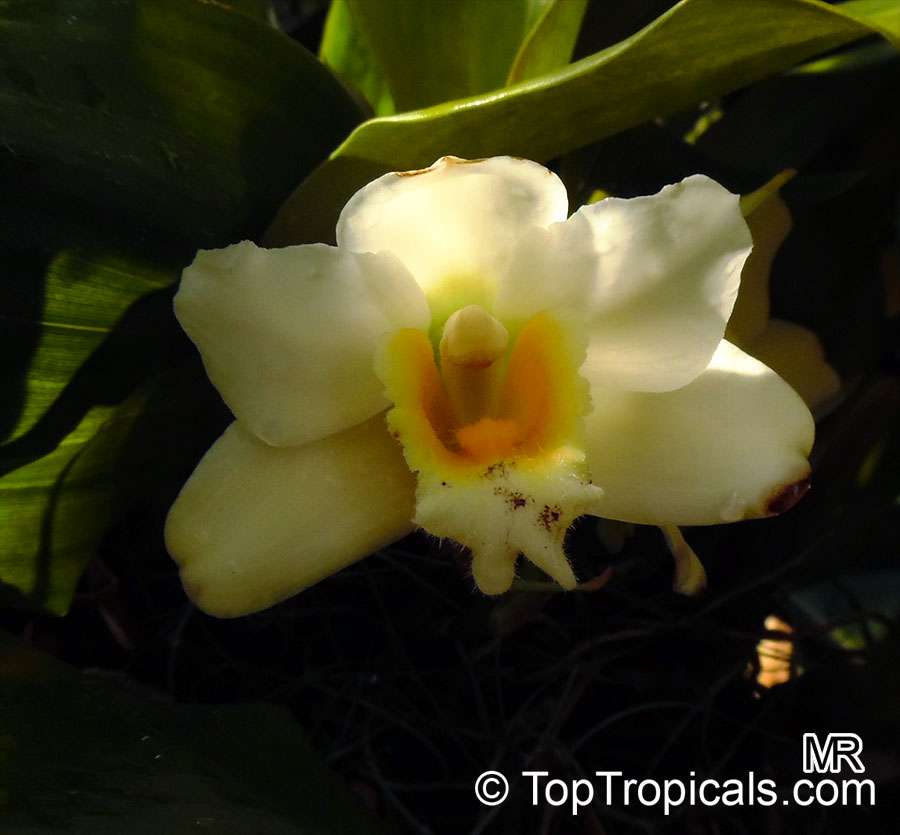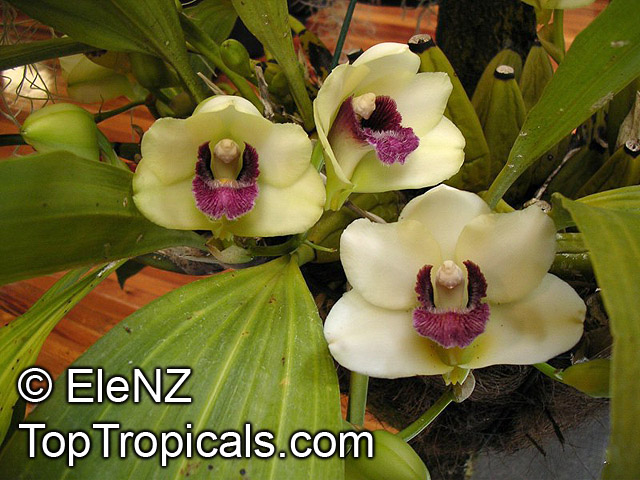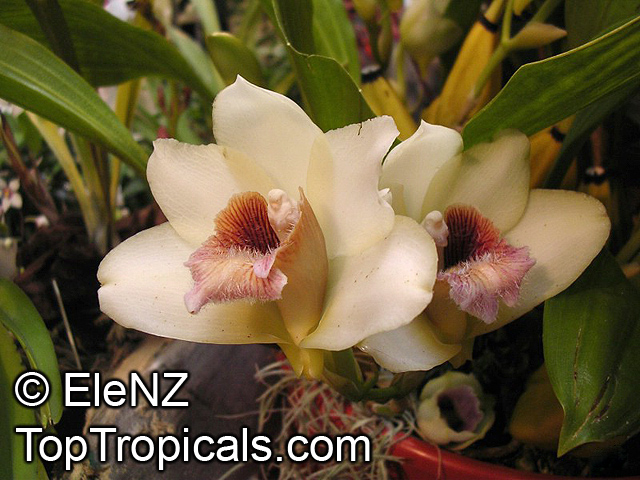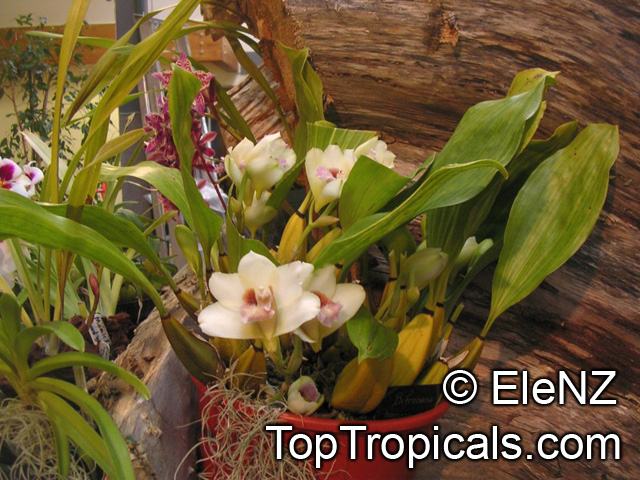Orchidaceae - Botanical Family
Top Tropicals Plant Encyclopedia
| Number of plants found: 120 | Next | 
|
Go to page: | 1 | 2 | 3 | 4 | 5 | Last |
Botanical names: Aerangis hariotiana, Microterangis hariotiana, Chamaeangis hariotiana
Common name: Hariot's Microterangis
Family: Orchidaceae
Origin: Comoros






Its flowers are irresistible to butterflies, moths, and hummingbirds. Aerangis hariotiana (Hariot's Microterangis) is an epiphytic plant native to Comoros, a set of islands off the coast of East Africa. The plant has ovate-lanceolate leaves and grows 2-5 ft tall. It prefers semi-shade, but can still thrive in bright filtered light.
Aerangis hariotiana will thrive in USDA Zone 9-11 and can be grown as a potted plant indoors in colder regions as long as it is given the appropriate amount of humidity, light and water. This plant does best in a light and airy potting mix with several handfuls of natural material such as fir-bark, perlite, and other ingredients, depending on the composition of your soil. It's important to keep the soil lightly moist, but not soggy.
Aerangis hariotiana also requires humidity and should have its roots misted regularly to prevent dehydration. Lastly, it is a good idea to use a balanced fertilizer at least once a year.
Besides its strongly night-scented, sherbet-orange miniature flowers, Aerangis hariotiana also attracts hummingbirds and butterflies, making it a great addition to any garden. Its blooms appear in late winter and early spring, making it an unusual addition to gardens in cold-weather regions. If you're looking for a unique statement piece to add to your garden, this small and prolific bloomer is sure to catch the eye!
Botanical names: Aerangis luteoalba, Angraecum rhodostictum
Common name: Beige Aerangis
Family: Orchidaceae
Origin: Central Africa





A small, usually pendulous, monopodial epiphyte that is almost stemless. The short stem is hidden by the basal sheaths of closely set leaves. The roots are often flattened, with thin velamen, are green when wet, and have emerald green tips. Aerangis luteo-alba var. rhodosticta has yellowish white flowers with a bright orange-red column.
Cultivated plants should be kept moist during periods corresponding to the wet seasons. They should be allowed to dry slightly between waterings during the dry seasons, but should never dry out completely or be left dry for extended periods.
Botanical name: Aerides odorata
Common name: Fragrant Aerides
Family: Orchidaceae
Origin: Indochina, Himalaya







This species is a large to giant sized, highly variable, hot to cool growing epiphyte. Like related genera, Aerides are best grown in open slatted baskets. Aerides species require ample water, every day in warm climates. 70% or higher relative humidity is beneficial although the plants can be grown lower. They require bright filtered light with some direct sunlight in the morning, semi-shade area placement is perfect.
Botanical name: Anacamptis pyramidalis
Common name: Pyramidal Orchid
Family: Orchidaceae
Origin: Mediterranean region









It is a good orchid to put into a meadow or wildflower lawn and usually thrives. Flowering takes place in late June through July. It also grows happily in a cold greenhouse, preferably in a plunged terracotta pot.
Botanical name: Anguloa sp.
Common name: Tulip Orchid
Family: Orchidaceae











Anguloa sp. is a small shrub grows from 2-5 ft, making it ideal for containers or small gardens. It prefers semi-shade to full sun, with regular watering. In hot regions it needs Moderate water for optimal health, and grows best in USDA Zones 9-11. When in season it presents large, showy blooms in shades of pink, white, and off-white, red and crimson, even vinous and yellow-orange. The blooms are sweetly fragrant, having strong scent of cinnamon, and attract both butterflies and hummingbirds.
When growing in a pot in colder regions, it's important to keep it sheltered from any frost. The soil should be kept slightly moist, not wet, so it is advisable to water only when the soil slightly dries up. Frequent misting may also help to keep some moisture around the plant. A layer of mulch in winter can help protect the roots from any natural frost.
Overall Tulip Orchids are a moderately easy to care for plant. As long as the climate is hospitable and given the right balance of water and sun, the reward of large, show stopping blooms is worth the effort.
Botanical name: Ansellia africana
Common name: Leopard Orchid
Family: Orchidaceae
Origin: South Africa
Hardiness: 50°F






Ansellia africana, also known as the Leopard Orchid, is a striking epiphytic orchid native to sub-Saharan Africa. It forms large clumps of tall, cane-like pseudobulbs with long, arching leaves, and produces numerous yellow flowers covered with bold brown or maroon spots that resemble the pattern of a leopard's coat. These showy blooms appear in branching sprays and make the plant one of the most distinctive African orchids. The species is highly regarded for its dramatic floral display and the ability to thrive in bright light, often growing high in trees in the wild.
In cultivation, Ansellia africana requires warm temperatures, abundant light, frequent misting to keep aerial roots hydrated, and good air movement to prevent rot. It benefits from regular watering during active growth but prefers a drier rest period after flowering. This orchid is not frost tolerant and should be grown in USDA Zones 10-11, with protection required if temperatures fall below 50 F. Large plants adapt well to baskets or open containers that allow their extensive roots to develop freely, and they reward consistent feeding with impressive floral displays.
Botanical name: Arpophyllum giganteum
Common names: Hyacinth Orchid, Bottlebrush Orchid
Family: Orchidaceae
Origin: Central America





Arpophyllum giganteum, commonly known as Hyacinth Orchid, is a type of epiphytic orchid native to Central America. This small shrub typically grows to a height of 2 to 5 ft and thrives in USDA Zone 9-11. Its bright pink flowers appear in the spring and summer, with the single flower head up to 40 cm in length.
The Hyacinth Orchid will grow best when provided with semi-shade and moderate water. For those living in colder regions it can be grown in containers. Place the container in a spot where it will receive filtered indirect sunlight, potted in a well-draining potting mix and watered around once a week, making sure it is not left in standing water. Fertilizer, when needed, should be mixed in with the watering. Allow the orchid to dry out between each watering and maintain a temperature of at least 65°F. Taking care to not overwater, as this can result in the orchid developing root rot.
In summary, the Arpophyllum giganteum, otherwise known as the Hyacinth Orchid, is native to Central America and is an ideal houseplant for those living in USDA Zones 9-11. It is a small shrub, growing up to 2-5 ft tall and producing single flower heads up to 40 cm in length. When caring for, it will require semi-shade, moderate water, and temperatures of at least 65°F. Those living in colder regions should plant in containers and take special caution not to overwater. With the right care, the bright pink flowers of the Hyacinth Orchid will be sure to be brightening your home come spring and summer.
Botanical names: Arundina graminifolia, Arundina affinis, Bletia graminifolia
Common names: Bamboo Orchid, Bird Orchid
Family: Orchidaceae
Origin: SE Asia








The bamboo orchid, Arundina graminifolia, is a species of orchid and the sole accepted species of the genus Arundina. This tropical Asiatic genus extends from India, Sri Lanka, Nepal, Thailand, Vietnam, the Ryukyu Islands, Malaysia, Singapore, China to Indonesia, the Philippines and New Guinea. It has become naturalized in Reunion, Fiji, French Polynesia, Micronesia, the West Indies, Costa Rica, Panama and Hawaii.
Arundina graminifolia is a terrestrial, perennial orchid with reedy stems, forming into large clumps. This orchid blooms in summer and autumn, showing rather open clusters of showy terminal flowers, ten at the most. They bloom in succession on the terminal racemes. These flowers are a rosy lilac and white disk with a purple lip. The bracts are wide triangular and surround the main stalk of the flower cluster. The occasional fertilized seed pods contain minute powdery seeds, and small plants often develop near the cane ends after flowering, and likely aid in propagation if allowed to reach the soil.
With only 200 of the plant to be recorded growing naturally in Singapore, the species is close to extinction there, largely caused by the destruction of its natural habitat, namely the rainforests and mangrove forests. The remaining plants, commonly called Tapah weeds, can be found in the secondary forests or at the forest fringes. It is however very common in road cuts and other disturbed areas in full sun in Sarawak, East Malaysia, where it often is the most common flowering plant to be seen along the roadsides.
Bamboo Orchid produces pinkish flowers at the top of tall cane-like pseudobulbs. It's the only species in the genus. The plants are quite tall; they'll reach at least hip level, possibly over your head, and their vegetative resemblance to bamboo can be uncanny. The long pseudobulbs have leaves alternating along their length, similar to Epidendrum orchids. The flower stems, which emerge from the top of the canes, produce several flowers sequentially, so that there will be one at a time over an extended period. The flowers are white with a purple-to-pink lip, and shaped similarly to a Cattleya orchid flower. They are 2-3 inches across, and can appear for much of the year, especially in summer.
Arundinas readily propagate themselves by keikis, which frequently develop along the pseudobulbs. Once a keiki has roots a couple inches long (several cm), you can carefully cut it off and pot it separately. The canes do not grow rigidly upright, they'll sometimes tip over; in nature, this allows the keikis to get established nearby, so it's a major vegetative propagation strategy for these plants; it helps them rapidly grow into large clumps. These plants like colonizing disturbed habitats, often growing as roadside weeds in much of Southeast Asia; being able to grow quickly helps them succeed in such places.
These plants are tough: they are quite robust and forgiving of less-than-attentive care. They are terrestrial orchids, so they like a denser potting mix than most orchids. It should still drain freely, however, and not be as dense as soil. A good starting point is equal parts sand, sphagnum moss, and fine fir bark. Bamboo orchids should be watered as they approach dryness; don't let them dry out too thoroughly. If you grow them outdoors, either if you live in a warm climate or if you just brought it outdoors for the summer, rainfall might water it often enough in some areas; but if it's starting to dry out water it thoroughly. If you grow orchids indoors, these plants are often too big to take to the sink; the easiest way to water will often be to dunk the pot in a bucket, then pull it out. Any aerial roots, such as on keikis, should be misted regularly. Fertilize regularly; the usual recommendation is to use a fertilizer especially formulated for orchids feeding weakly. Most orchid fertilizers are designed to be dissolved in the plant's water. They like high light: 2000-3000 footcandles is ideal, similar to the low end of Cattleya lighting. In nature, they commonly grow in direct sunlight. As long as the lighting isn't too dim you're probably fine. If it doesn't bloom, try increasing the lighting. You'll get the best results growing them at warm temperatures. It's OK if the temperature varies more widely than this; they can actually withstand mild freezes occasionally, though it's quite stressful for them. Any temperature that's reasonably comfortable (or a bit hot and muggy) for humans is going to be fine for bamboo orchids. They like good humidity, perhaps 70%, though this isn't critical. If the humidity is low, the plant should be misted regularly, especially if it has any keikis.
See video about Ground Orchids.
See video about Ground Orchids.
Recommended Fertilizer: SUNSHINE Megaflor - Bloom Nutrition Booster
Botanical name: Ascocentrum sp.
Common name: Ascocentrum
Family: Orchidaceae
Origin: Southeast Asia









Ascocentrum orchids are beautiful Vanda relatives. They are generally considered miniature orchids, as they look a lot like Vandas, except smaller and brightly colored, with quite dense, erect flower stems. They are often hybridized with Vandas; the hybrids genus is called Ascocenda.
Water regularly and maintain high humidity and good air circulation.
With the publication of Genera Orchidacearum volume 6, all Ascocentrum species are now included in the genus Vanda.
Botanical names: Bifrenaria harrisoniae, Dendrobium harrisoniae
Common name: Bifrenaria
Family: Orchidaceae
Origin: South America









Bifrenaria harrisoniae, commonly called Bifrenaria, is a small shrub that grows between 2 to 5 feet in height. Native to South America, this plant is an epiphyte which is known to grow in semi-shade. It is hardy in USDA Zones 9-11 and can be grown both in the ground and in a pot. Bifrenaria produces large, fragrant, pink to white or off-white flowers that attract butterflies, hummingbirds and other pollinators.
The plant needs regular watering to thrive; keep the soil consistently moist, but not overly saturated. If growing in a pot, water regularly during the growing season and less in winter during cold weather to avoid root rot. Bifrenaria planted in cold regions should be kept in a pot and brought indoors during winter months.
If planting in the ground, ensure the soil is well drained and not overly saturated. To best care for your Bifrenaria, add compost to the soil to help with moisture retention. Prune and shape the shrub regularly to give it an attractive appearance and keep it healthy.
In conclusion, Bifrenaria harrisoniae is a small, versatile plant that is easy to care for and can be grown both in the ground and in a pot. It is native to South America and produces fragrant, pink to white or off-white flowers that attract butterflies, hummingbirds and other pollinators. With regular watering and occasional shaping, the Bifrenaria can be a great addition to any garden.
| Next |  |
Use link to repeat this search:
https://toptropicals.com/cgi-bin/garden_catalog/cat.cgi?search_op=and&keyword_op=and&language=e&family=Orchidaceae&number=10
&no_change_lang=1&user=tt&sale=1&first=0
